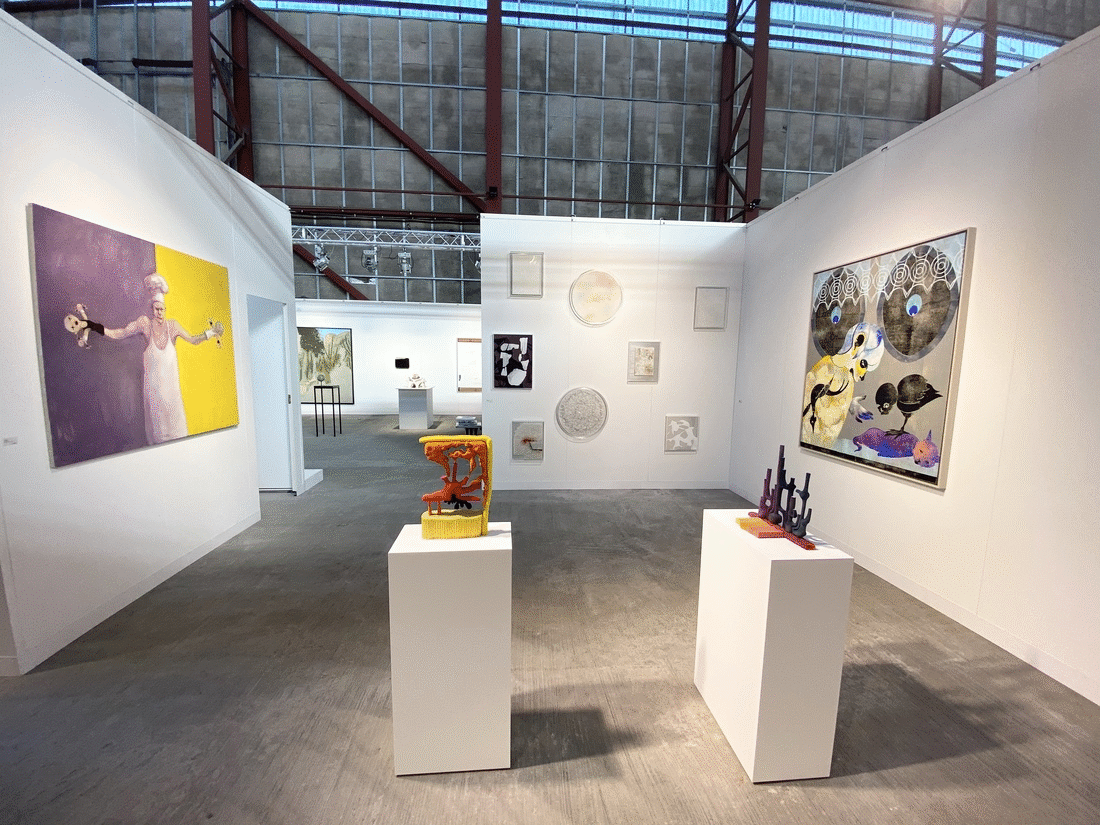NILS STÆRK
·
BOOTH 32
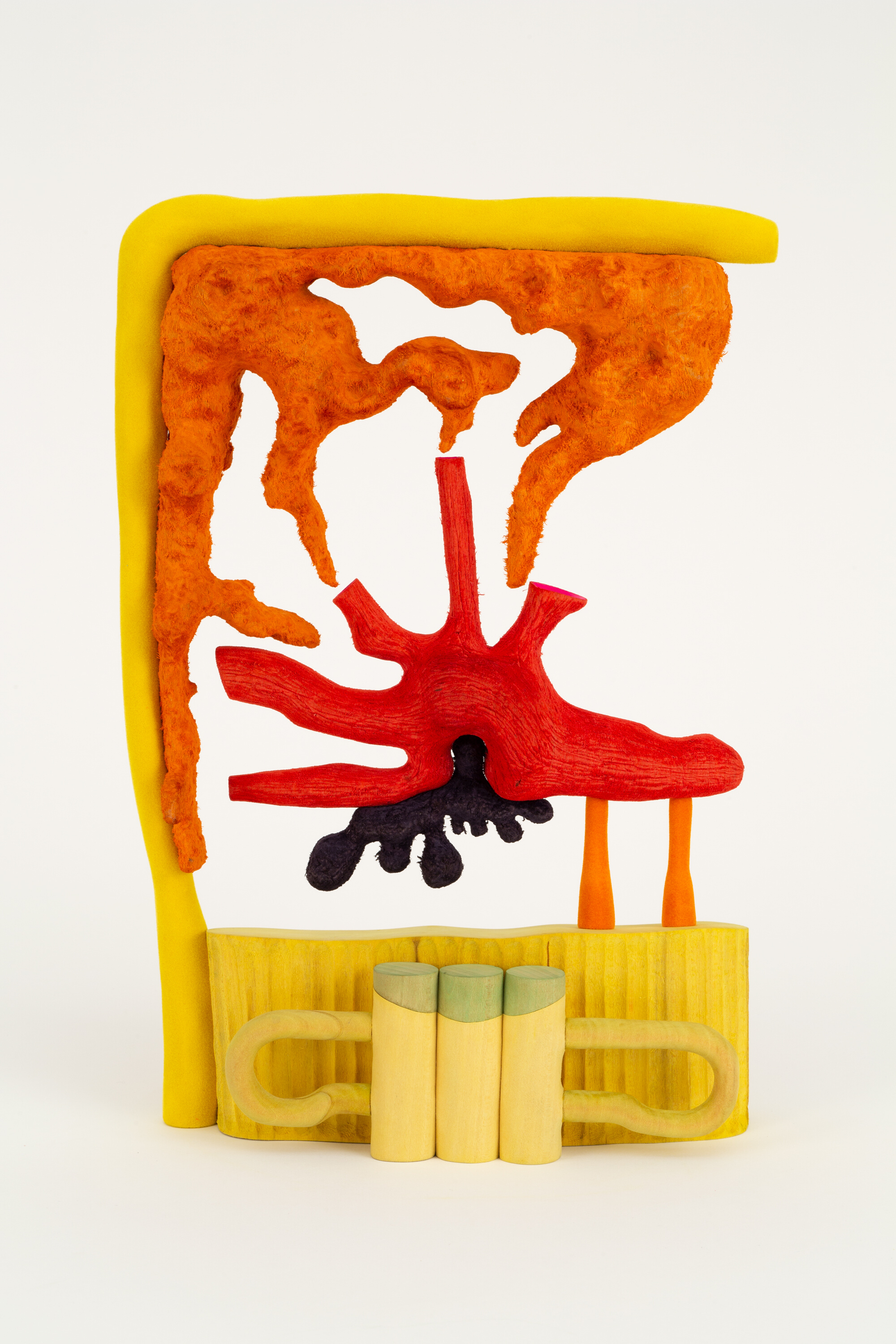
Matthew Ronay
Signaling Device, 2020
Basswood, dye, gouache, flocking, plastic, steel
37,5 x 26,7 x 10,2 cm (14,75 x 10,5 x 4 in)
Matthew Ronay creates works that are derived from interacting with his subconscious. They begin as automatic drawings, done in many mediums, from small, quick pencil sketches, to larger charcoal works. These form the basis for Ronay’s softening of a membrane between the conscious mind and what lays beneath it. This practice generates a pool of representations that essentially evolve into sculpture. Working primarily in basswood, Ronay creates all of his works unassisted, investing the sculptures with rhythmic textures and shapes that seem to have “grown” autonomously. The works are generally abstract and non-representational, but they vibrate heavily with nature’s vocabulary; tubes, bumps, warts, eggs, orifices. The works also embrace nature’s themes of reproduction and degradation and depend on the space between their parts, implying the intimacy of touch which viewers often intuit in a haptic way.
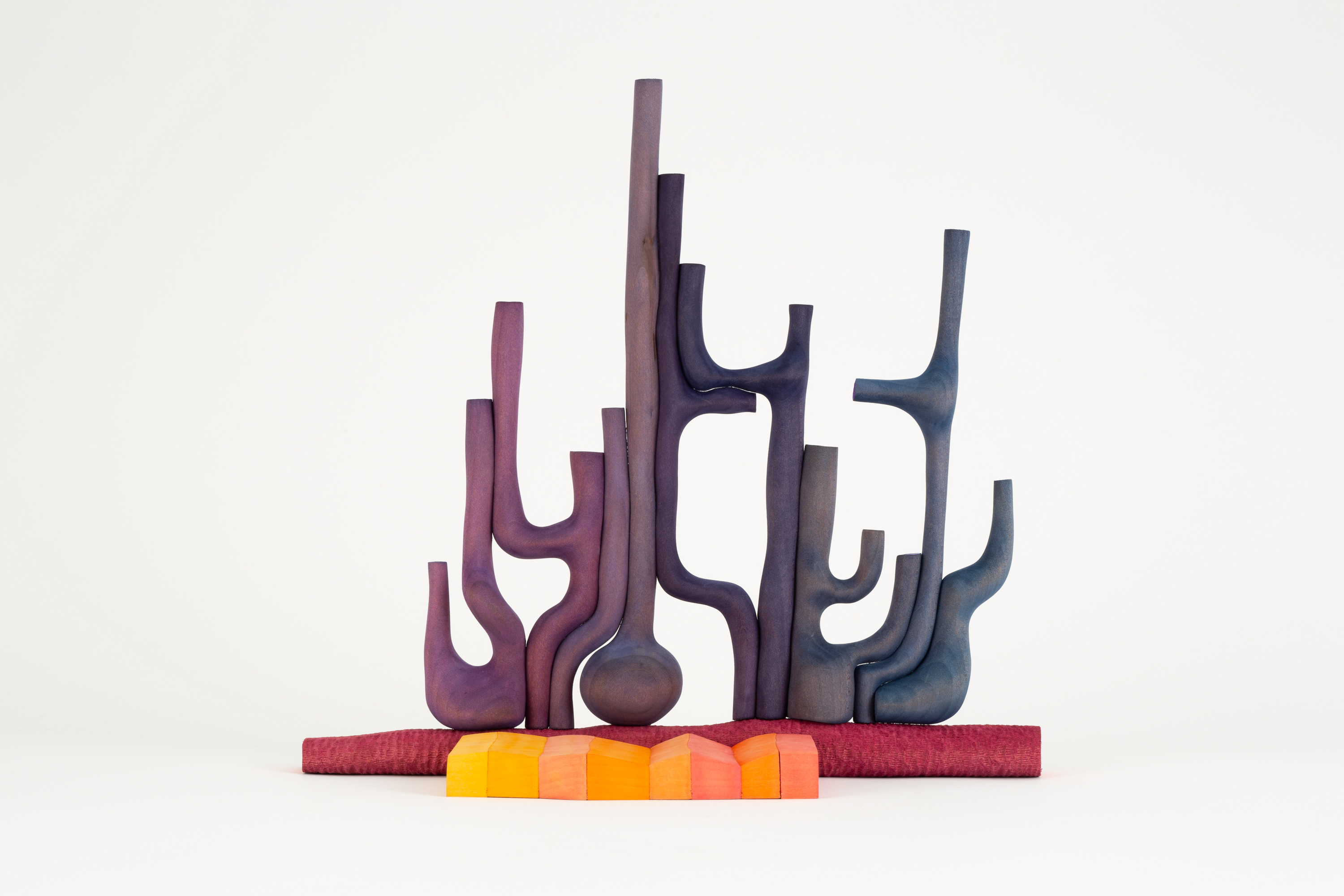
Matthew Ronay
Syntax Fryer, 2020
Basswood, dye, gouache, steel
34,3 x 36,8 x 15,2 cm (13,5 x 14,5 x 6 in)
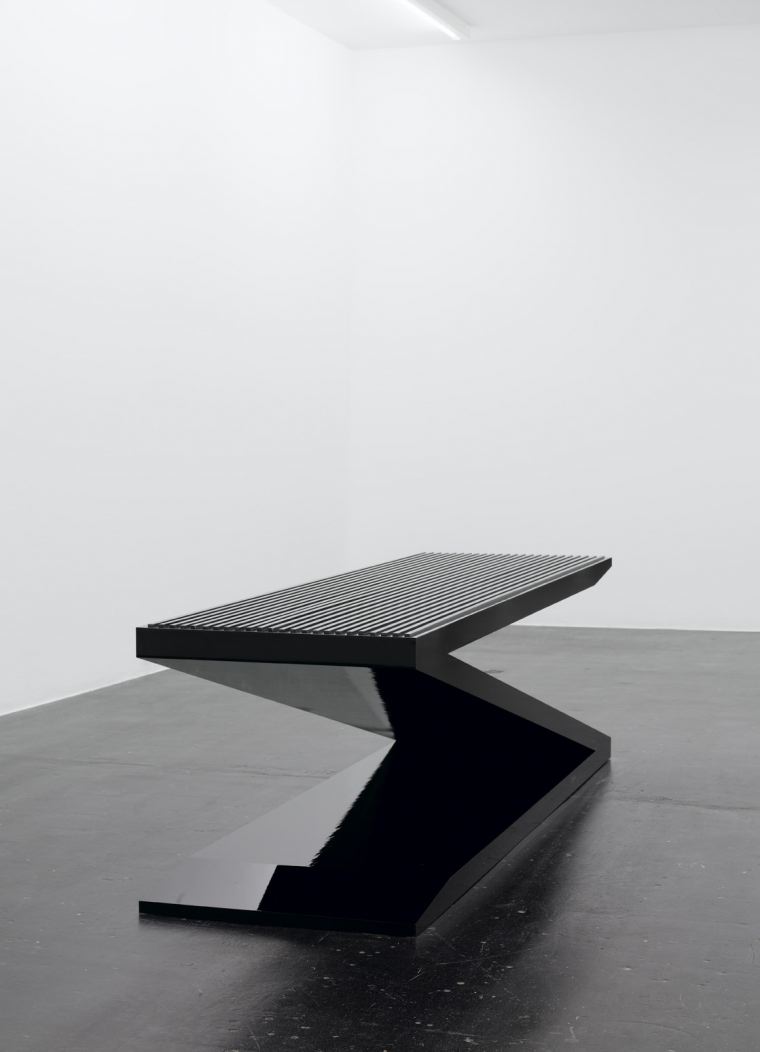
Ingvar Cronhammar
Park Bench IV, 2007
Painted aluminium, plaster and corian
50 x 50 x 170 cm (19,69 x 19,69 x 66,93 in)
Weight 379 kg
Edition #4/7, + 1 AP
Park Bench IV forms part of the Cronhammar oeuvre, which for a number of years has hovered at the juncture of art, design and architecture. Since the early 90es Cronhammar has executed a series of architectural adaptations and cityscape installations.
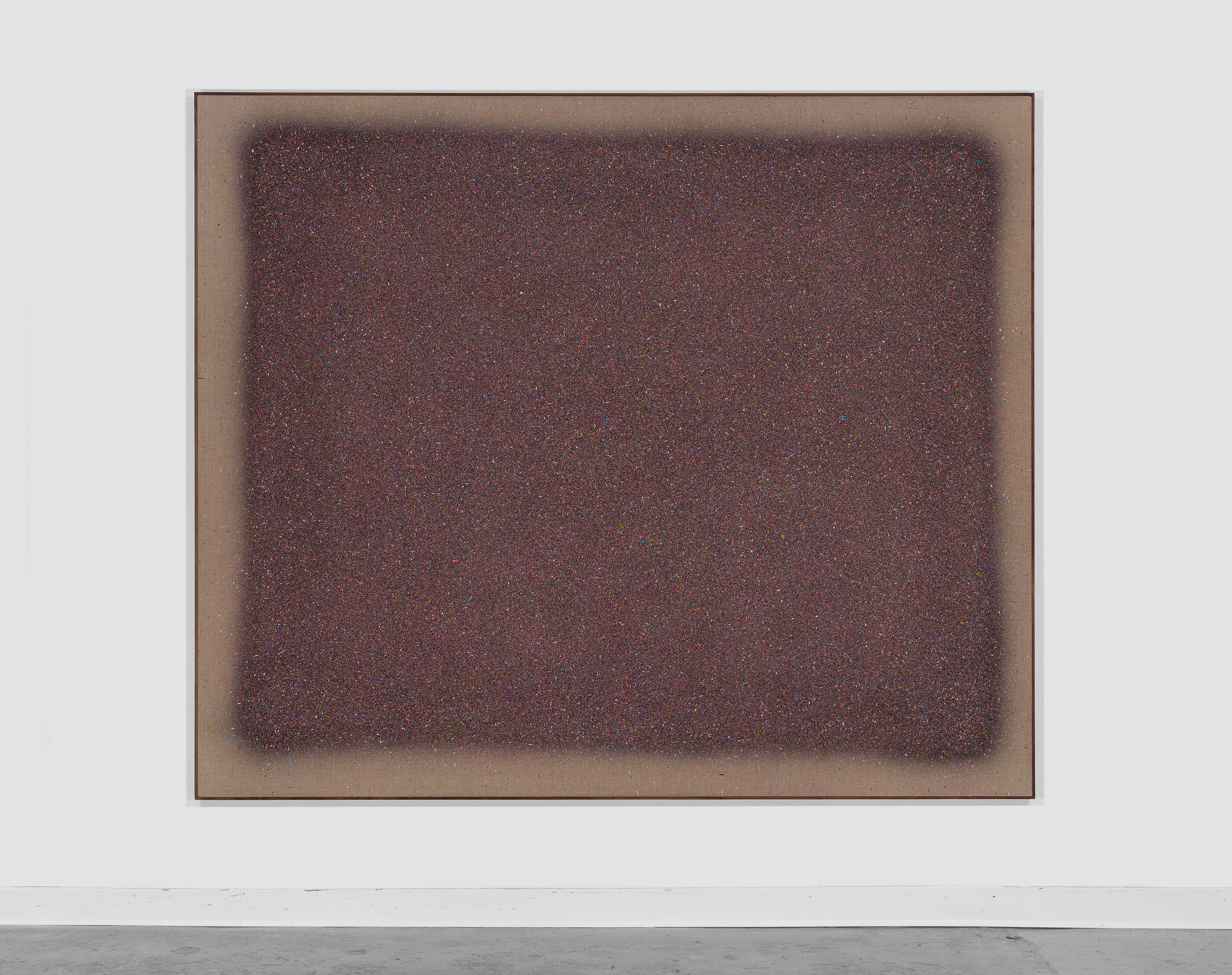
Paul Fägerskiöld
Untitled, 2019
Acrylic on canvas with walnut frame
202,5 x 241 cm (79,72 x 94,88 in)
"The spray-paintings are, in my mind, naturalistic paintings. They are painted in a way that resembles how a sea of greens, the crown of a tree, a foggy sky, or the ground on mars can be perceived. The paintings are not bound to represent a specific place, time, or situation; Instead, they are painted as liberated from time, place, and even gravity.
When I started to mix paint, one of my first hard-won experiences was trying to observe nature and paint it. No one thing is a single color. One field is never just one but many. The crown of a tree is not only green but a myriad of different greens, as well as hundreds of small interruptions, often too small to see or notice, let alone paint. But one notices the absence. The absence of those interruptions and broken-up surface. I use the language of landscape painting. The formats, the paint, and the application of the paint and colors. But the shapes painted are simplified, unspecific, geographic, abstract, and somewhat arbitrary. Leaving a space between the language of depiction and what is actually pictured. In other words, painting a non- specific graphic form with a pictorial language traditionally used for figurative landscape painting. The surface is broken with thick brushstrokes and textures. I put a lot of old dry paint into the paint of the smaller works, making the surface topographical and geological. This makes the monochrome surface less static and even less monochromatic. Structured paint also makes the painting more material. The physical form of the immaterial image is very material and reveals its construction, showing the traces of its own production."
- Paul Fägerskiöld
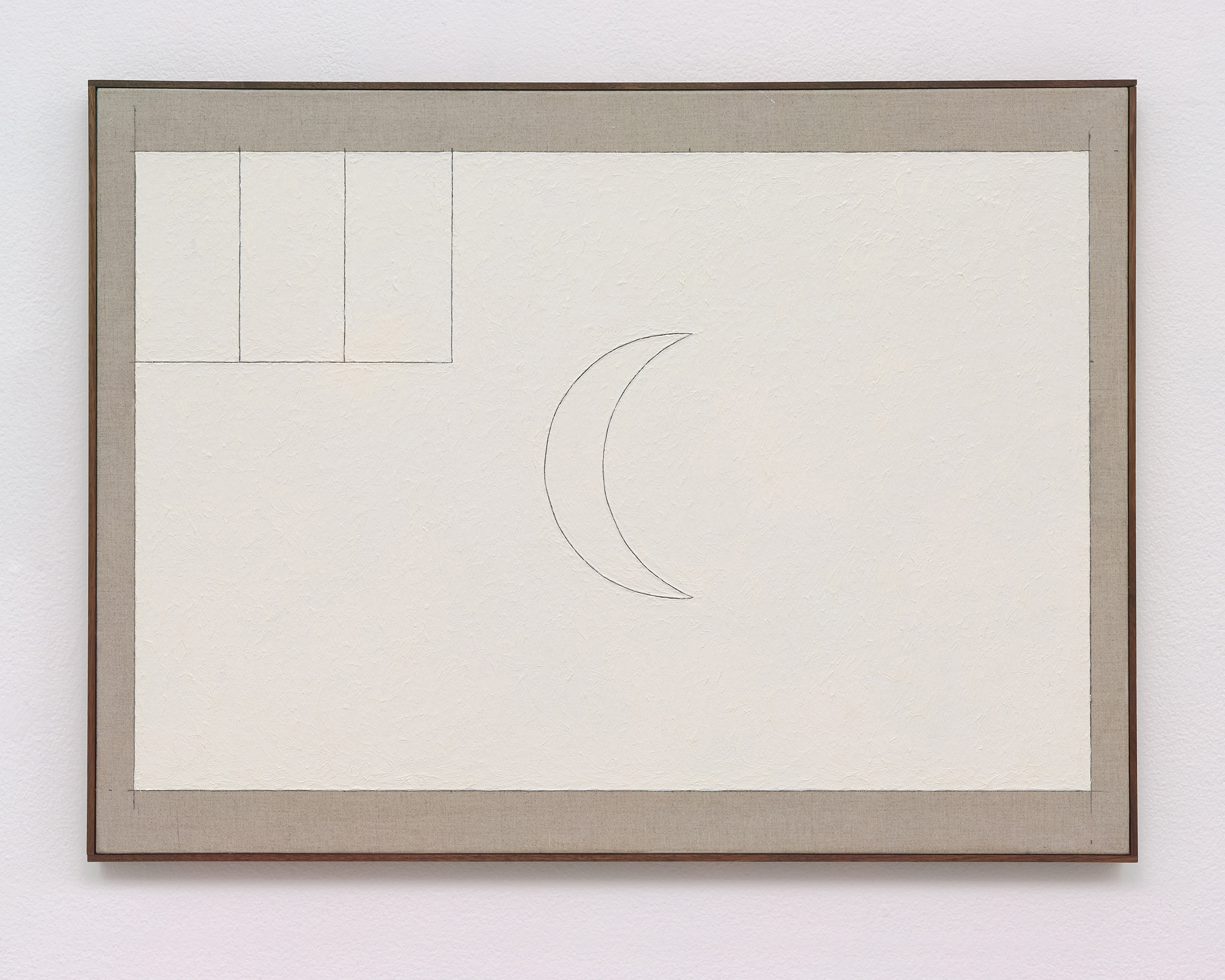
Paul Fägerskiöld
Untitled (White Flag), 2018
Oil on linen
61,5 x 82,5 cm (24,21 x 32,48 in)
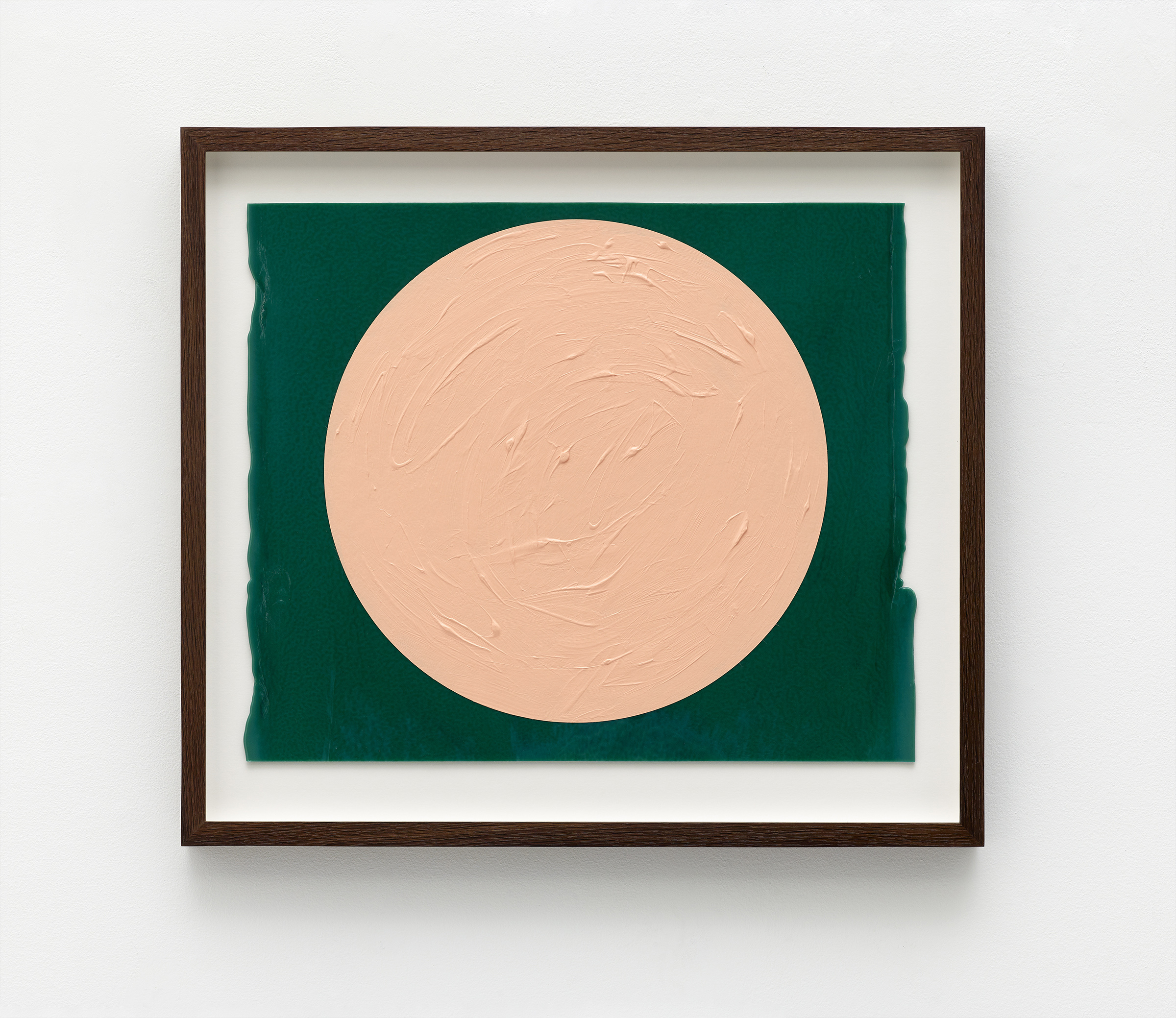
Mads Gamdrup
Untitled (green and pink), 2020
Acrylic paint on hand rolled glass
57 x 64 cm (22,44 x 25,2 in)
In his stained glass paintings, Mads Gamdrup examines the transparency and texture of colors. In both the monochrome and the multicolored paintings, Gamdrup works to create a space where the colors and differences in the texture of the glass are challenged by the painted circles. In the relationship between the glass and the painted circles, space is created in itself - and another space is created when the individual works are part of a serial context. This gives the pictorial expression a spatiality to use diversity as a quality - and opens up for individual interpretations.
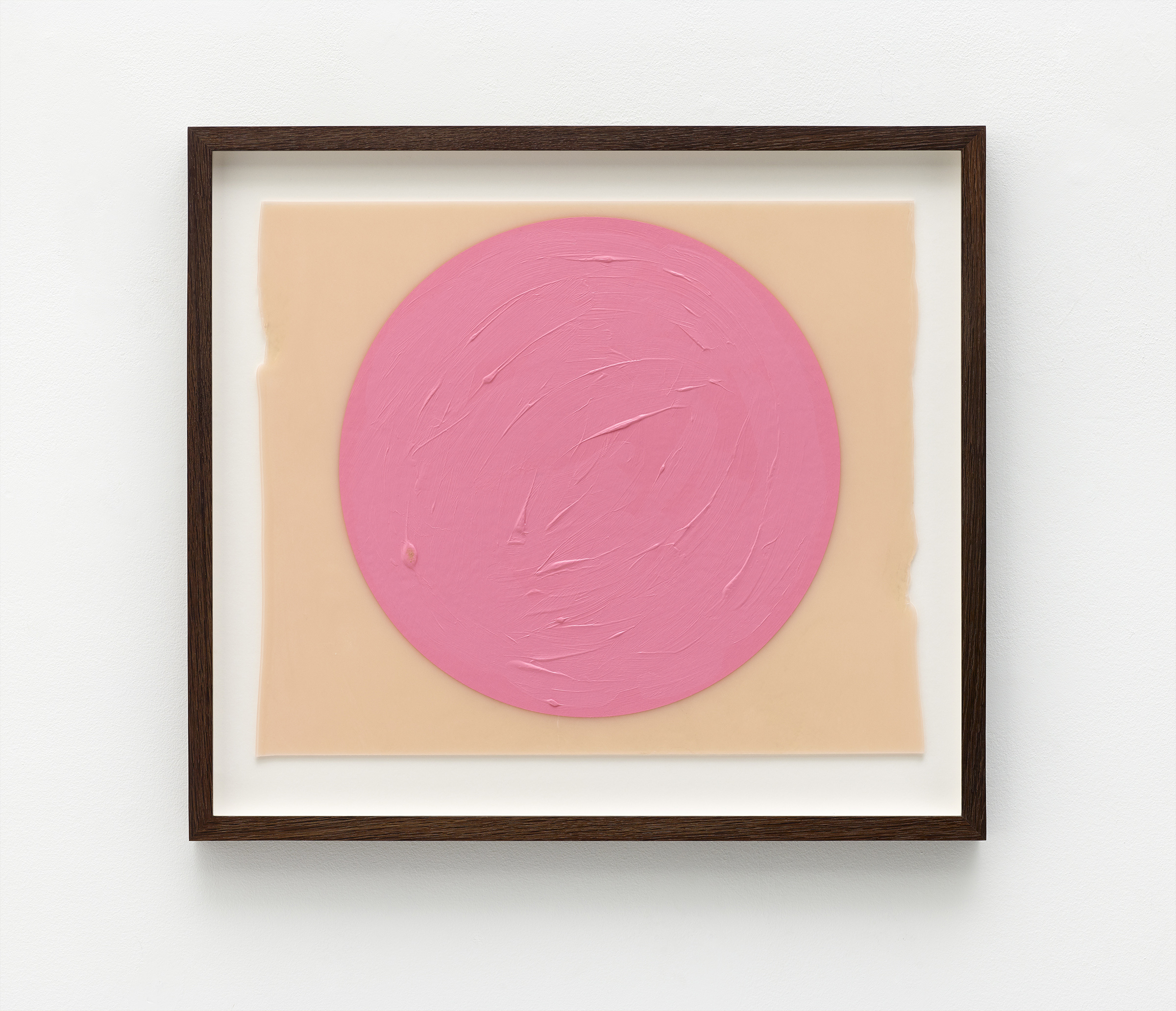
Mads Gamdrup
Untitled (clear pink and light magenta), 2020
Acrylic paint on hand rolled glass
57 x 64 cm (22,44 x 25,2 in)
Sold
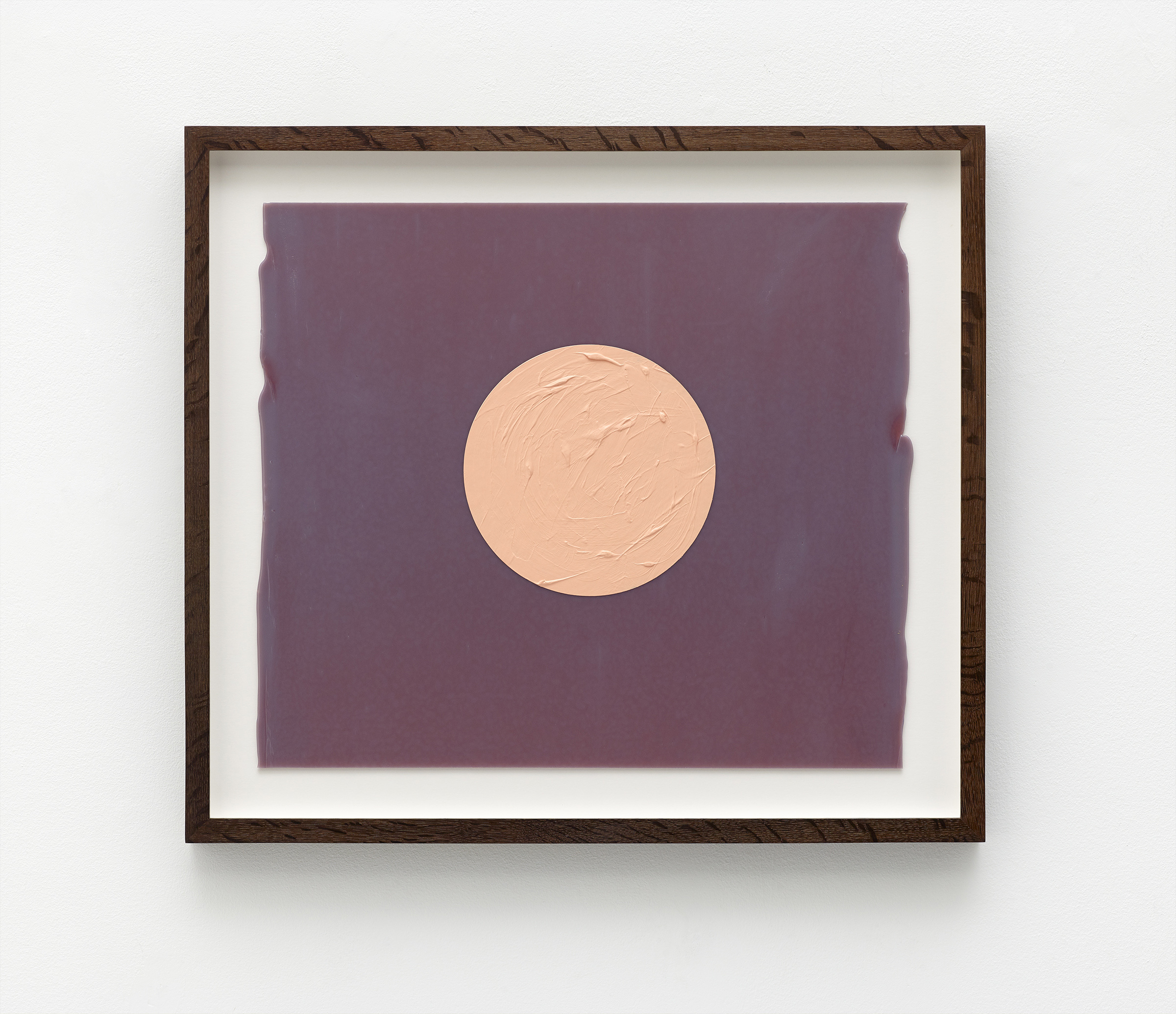
Mads Gamdrup
Untitled (lilac and light orange), 2020
Acrylic paint on hand rolled glass
57 x 64 cm (22,44 x 25,2 in)
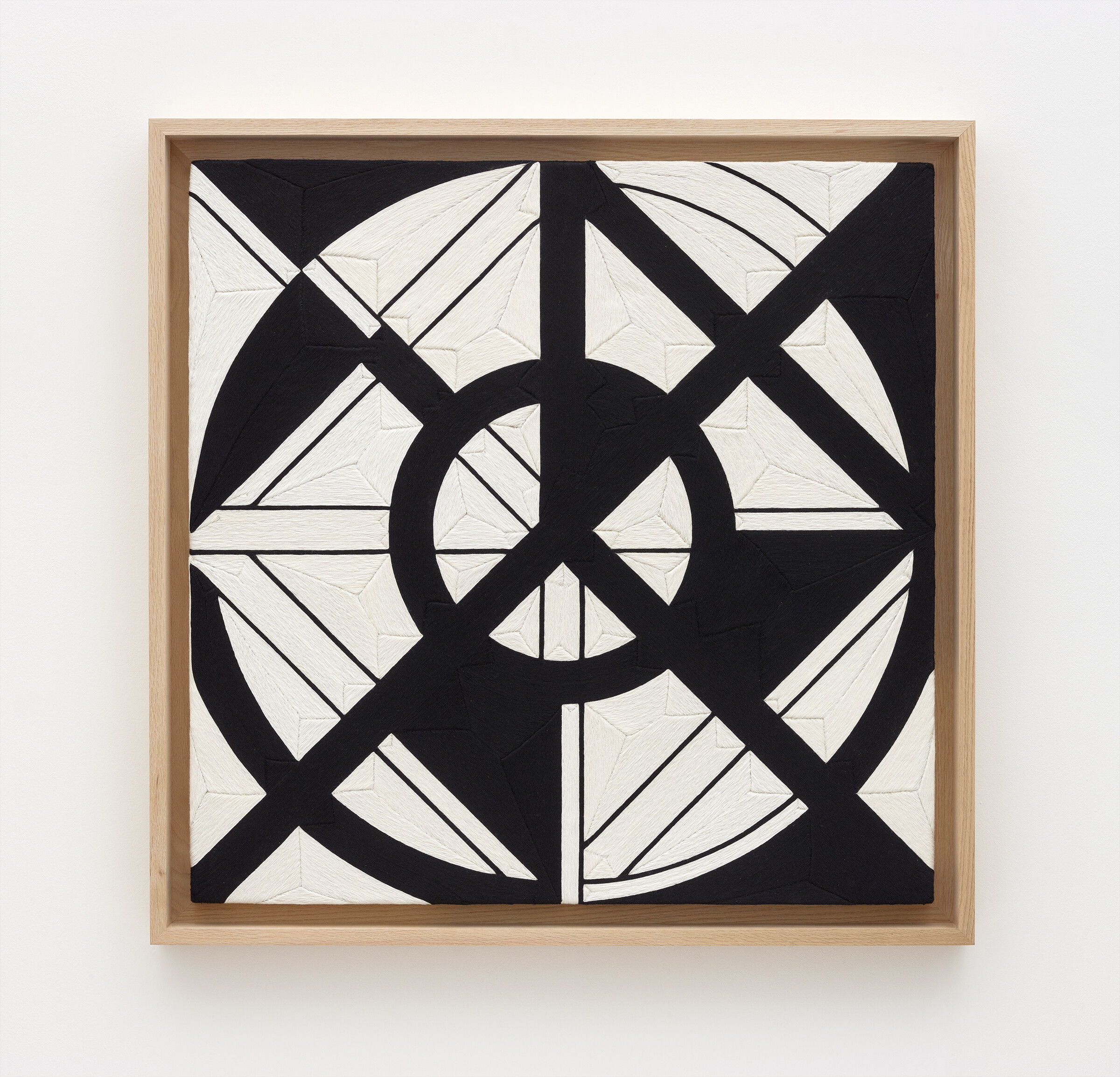
Eduardo Terrazas
Possibilities of a Structure: Cosmos 1.1.383, 2020
Wool yarn on wooden board covered with campeche wax
90 x 90 x 3,5 cm (35,43 x 35,43 x 1,38 in)
Terrazas broad artistic production includes works as heterogeneous as his most iconic series Possibilities of a Structure (1974 - ) with it subseries: Cosmos, Nine Circles, Diagonals, Grid and Bar Code, a pictorial investigation of the characteristics that allows an specific structure be developed and transformed to the infinite. Terrazas work serves as a testimony of his interest in thinking in an interdisciplinary way to establish visions of our contemporary world through universal visual languages. Image after image his work seems to tell stories of the geometry underlining our Cosmos.
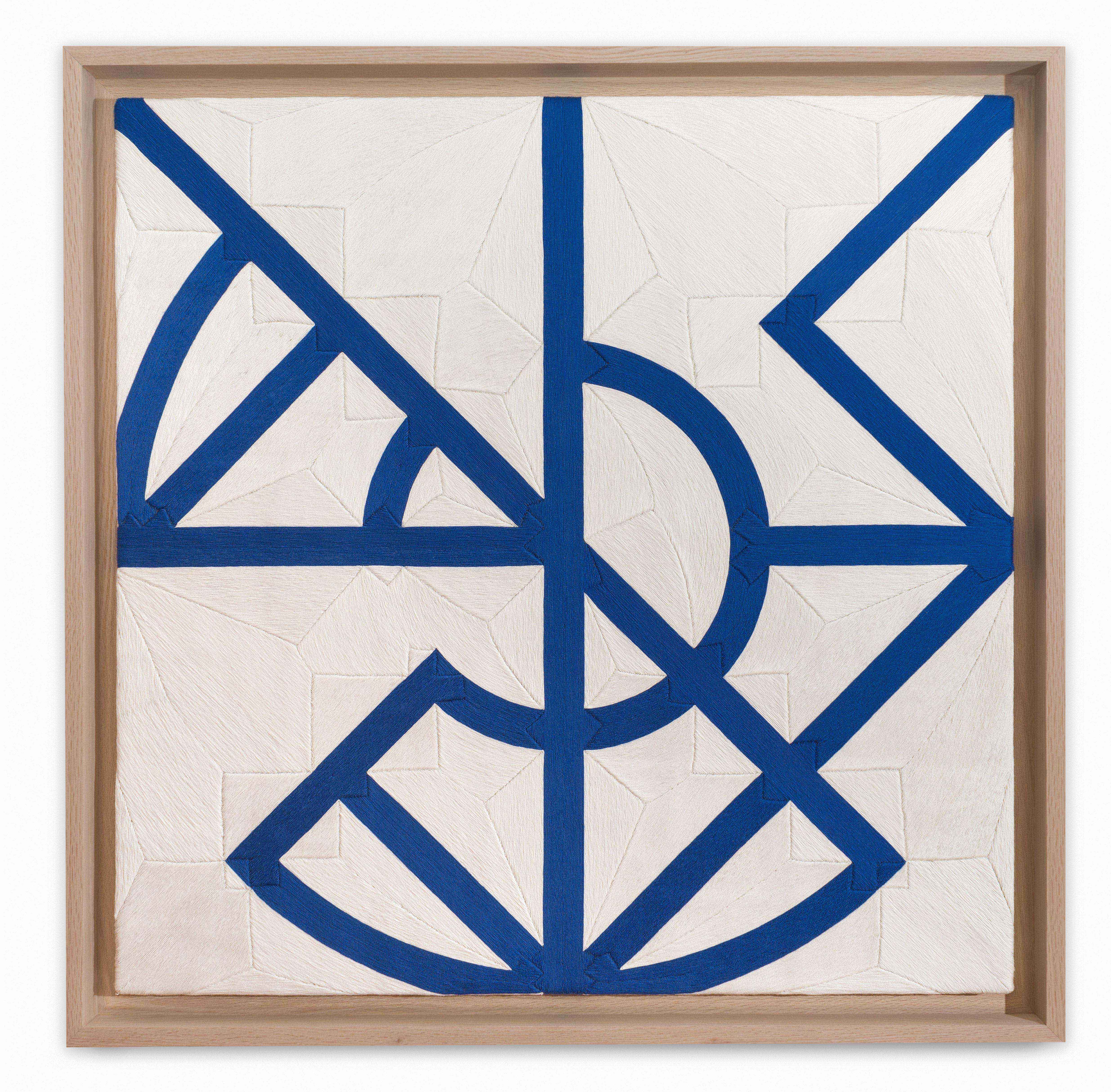
Eduardo Terrazas
Possibilities of a Structure: Cosmos 1.1.194 , 2020
Wool yarn on wooden board covered with campeche wax
100,5 x 100,5 x 7 cm (39,57 x 39,57 x 2,76 in)
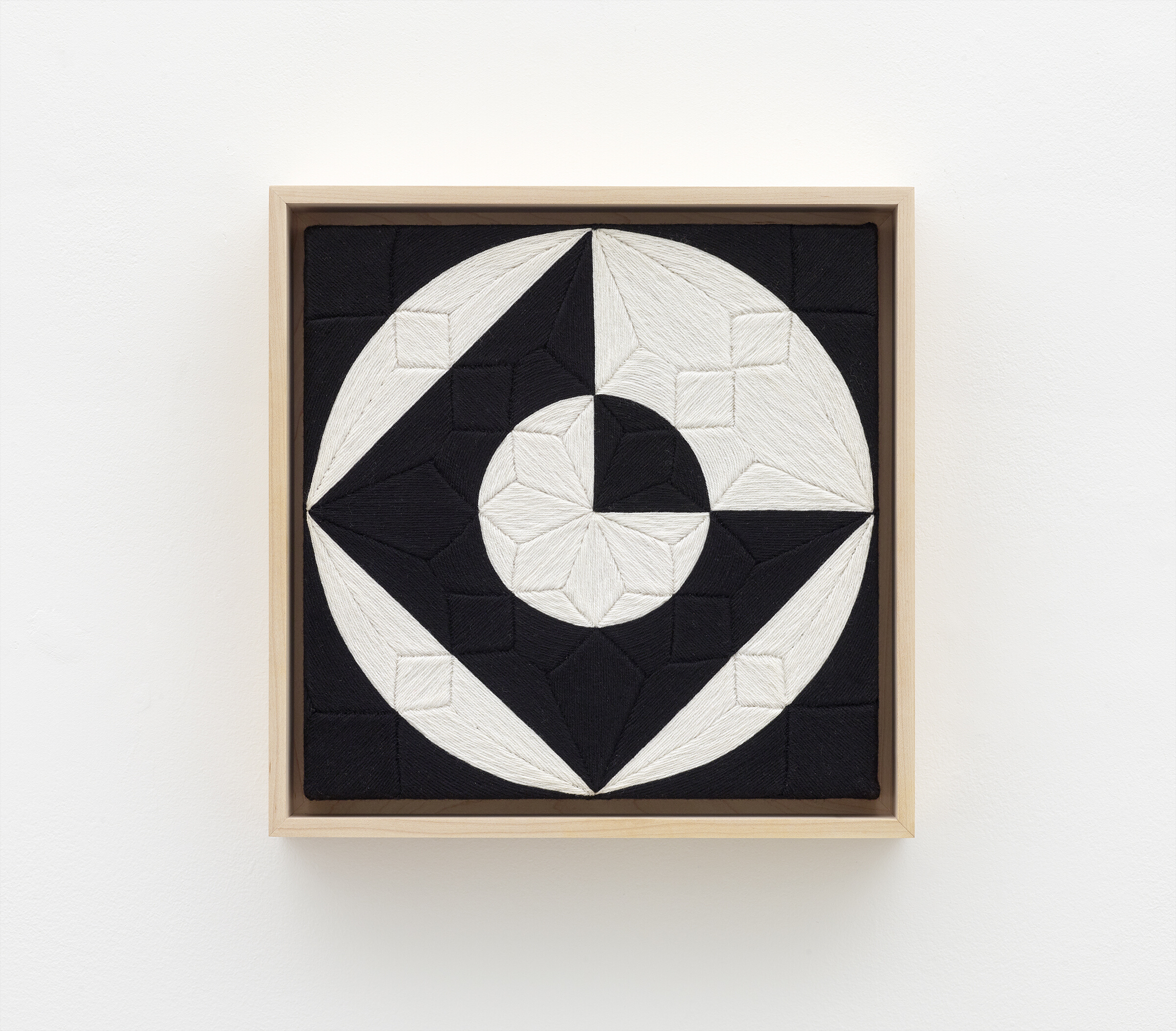
Eduardo Terrazas
Possibilities of a Structure: Cosmos 1.1.382, 2020
Wool yarn on wooden board covered with campeche wax
30 x 30 x 3,5 cm (11,81 x 11,81 x 1,38 in)
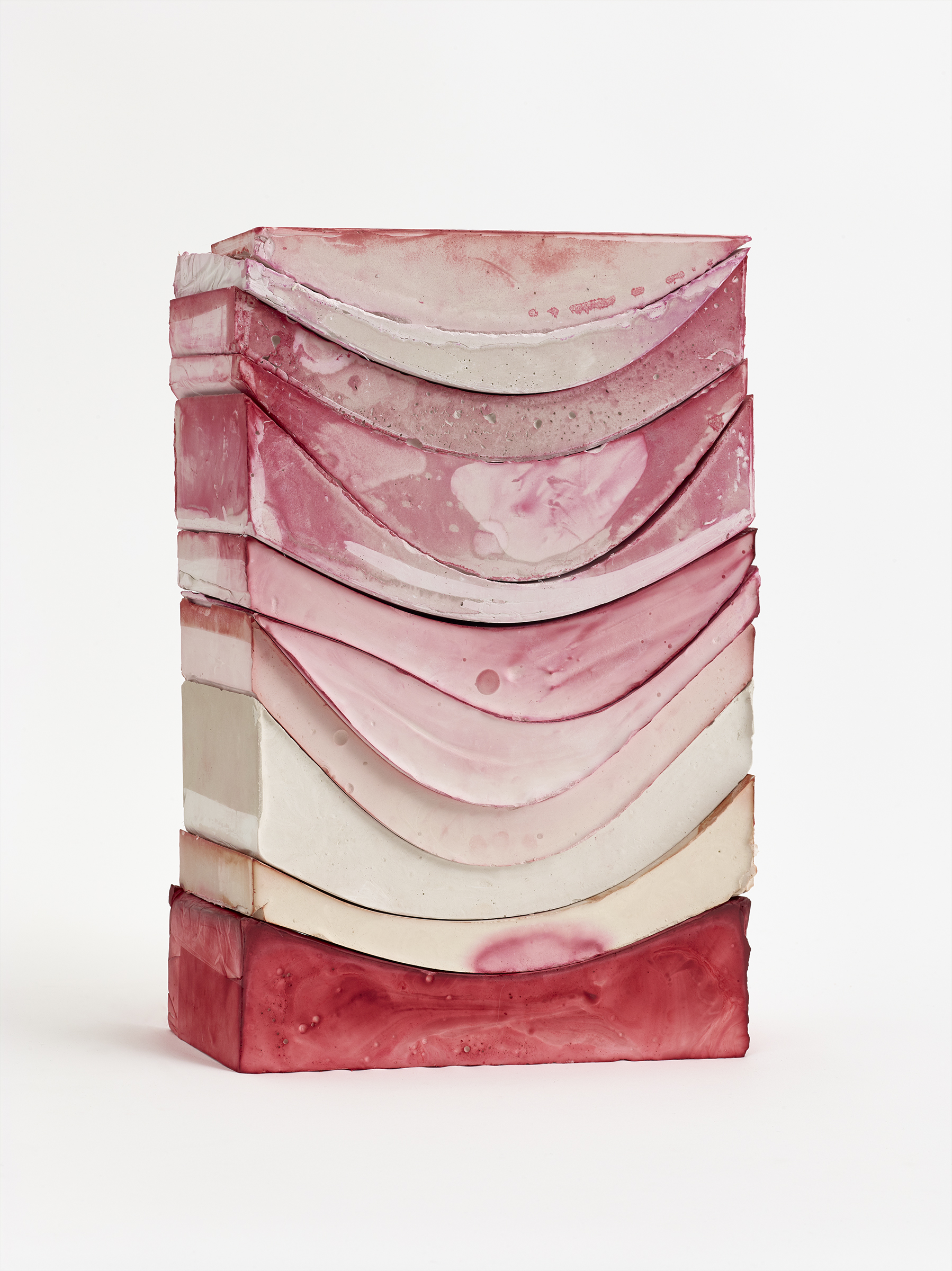
Tove Storch
Untitled (Berries), 2020
Plaster, liquid pigment
46 x 30,5 x 14,5 cm (18,11 x 12,01 x 5,71 in)
Sold
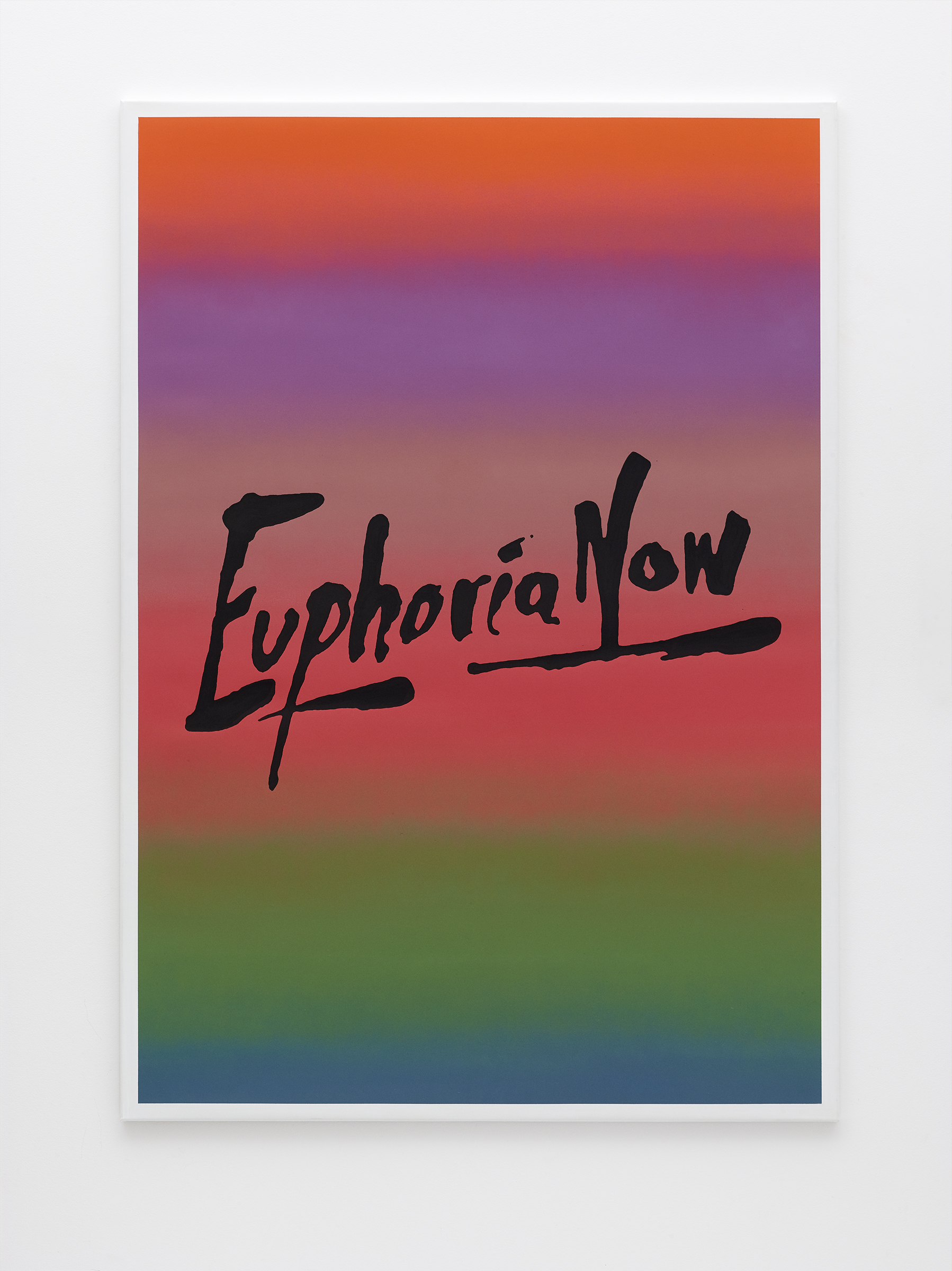
SUPERFLEX
Euphoria Now / Cayman Islands, 2017
Enamel spray paint, acrylic ink and synthetic matte finish on coated canvas
170 x 120 cm (66,93 x 47,24 in)
Euphoria Now is an ongoing series of paintings based on colour schemes of global currencies. Starting in 2016 with the seven colours of the euro notes. The paintings now exists in several versions to mark the many different currencies and economies that constitute our global market. To mention a few : Euro, US Dollars, Chinese Yuan, Singapore Dollars, Pound Sterling and Austrailian Dollars.
The conceptual starting point for the Euphoria Now paintings was the discovery of Brion Gysin and Ian Sommerville’s Dream Machine (1958/95). By looking at a series of flickering lights various colour patterns would appear and create a hypnagogic hallucination - supposedly encouraging artistic production. By directly referring to the colours of currencies, SUPERFLEX transferred the concept of the dream machine into contemporary society’s greatest hypnagogic hallucination of all: money.
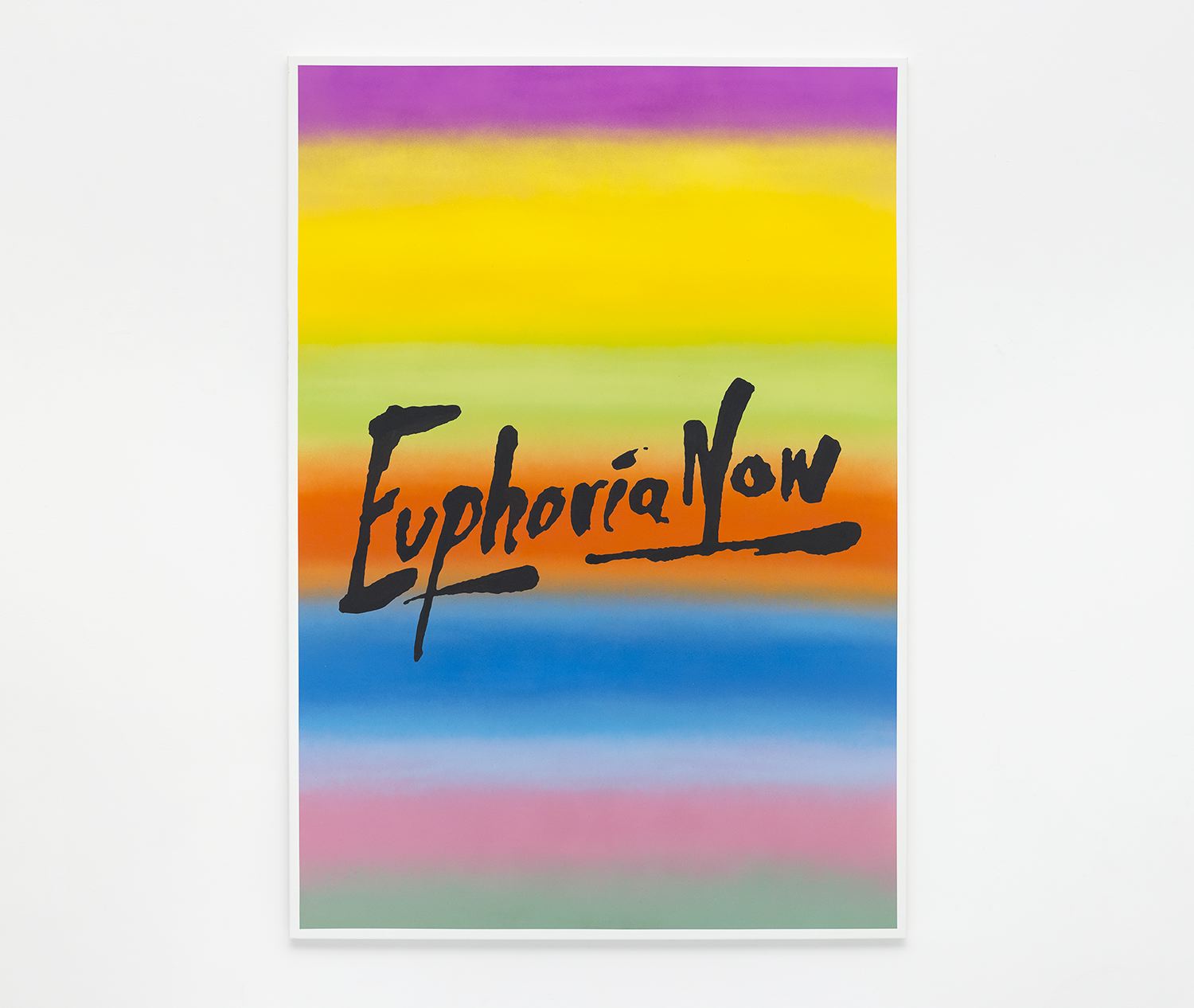
SUPERFLEX
Euphoria Now / Euro, 2016
Enamel spray paint, acrylic ink and synthetic matte finish on coated canvas
170 x 120 cm (66,93 x 47,24 in)
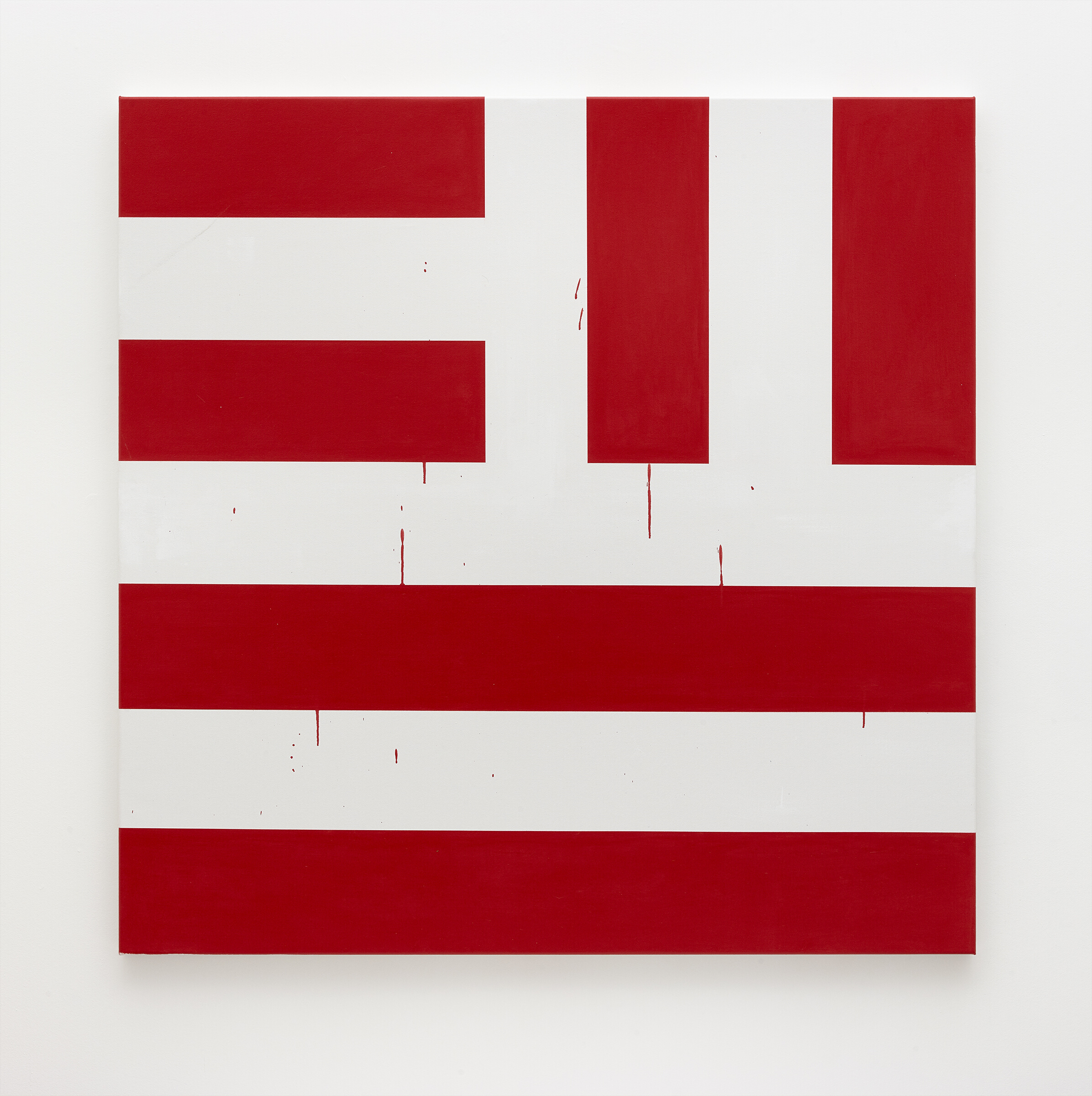
Gardar Eide Einarsson
Bank of America, 2020
Acrylic, gesso and graphite canvas
160 x 160 cm (62,99 x 62,99 in)
The work Bank of America, by Gardar Eide Einarsson, is a geometric, seemingly abstract painting. The composition is based on the logo of Bank of America which is in itself a simplified version of the American flag. Rendered in all red on a white background (rather than the red, white and blue of the original logo) the work references classic post-war painting from Frank Stella to Jasper Johns while at the same time the drips of red paint allude to the complicity of financial institutions like Bank of America in the repression and violence that runs below (and sometimes above) the surface of modern capitalism.
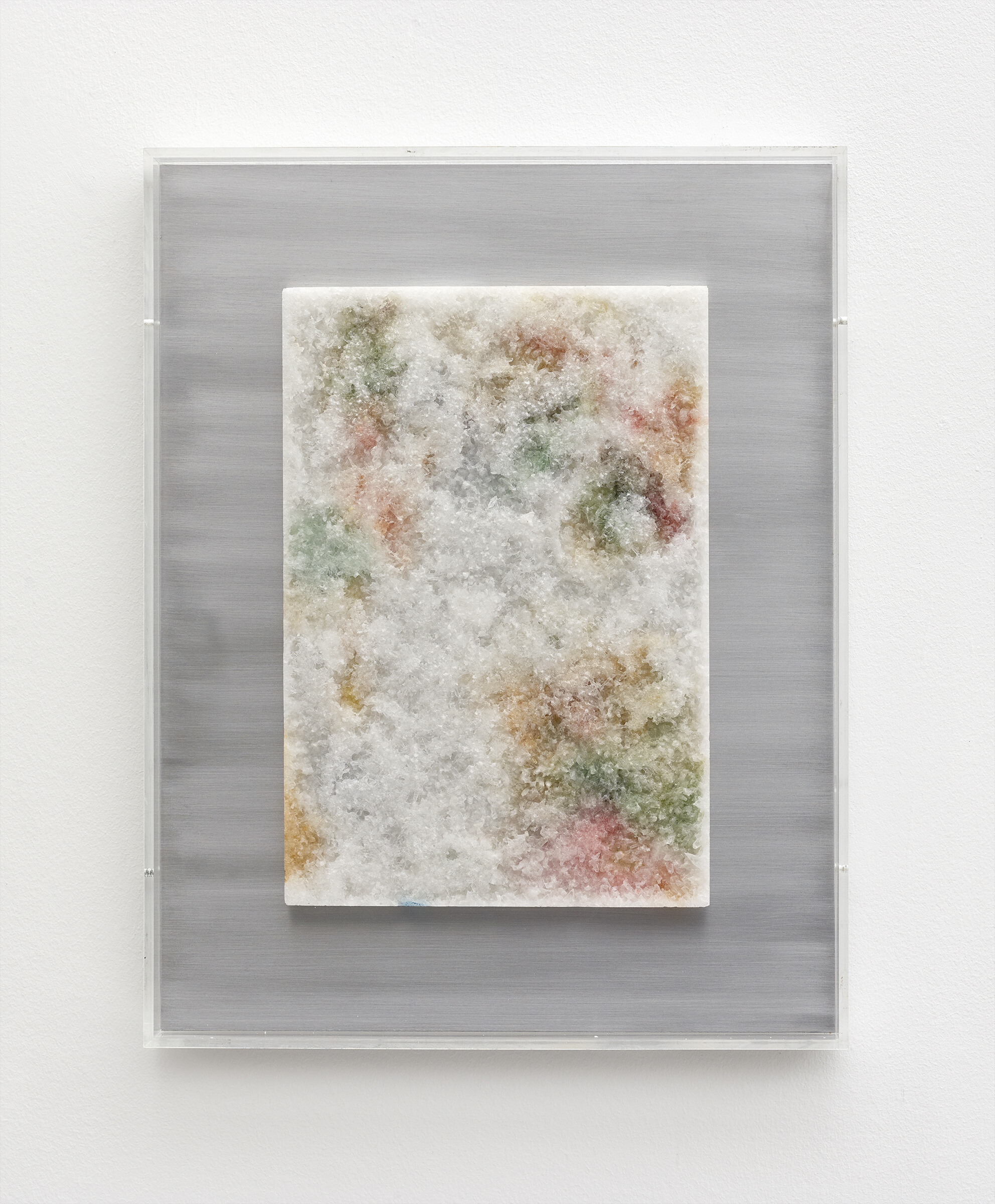
FOS
Untitled, 2020
Salt, acrylic, aluminium
46,3 x 36,3 x 6 cm (18,23 x 14,29 x 2,36 in)
FOS’ artistic practice is characterized by a fascination for creating social scenarios that rely on human interaction to come to life between room, object and viewer. His work has throughout time circled around and questioned what constitutes a sociality and his explorations with language. FOS uses his objects as a tool to create a functional frame. He leads us on a journey through a set of frames, where the material is processed and continues becoming an object or a language that we in connection with one-another, create a relationship around. The untitled wall object makes use of natural materials like salt, water and oxygen - together they create a chemical reaction and as the water evaporates drips of colors are added and a crystallized landscape of salt appear.
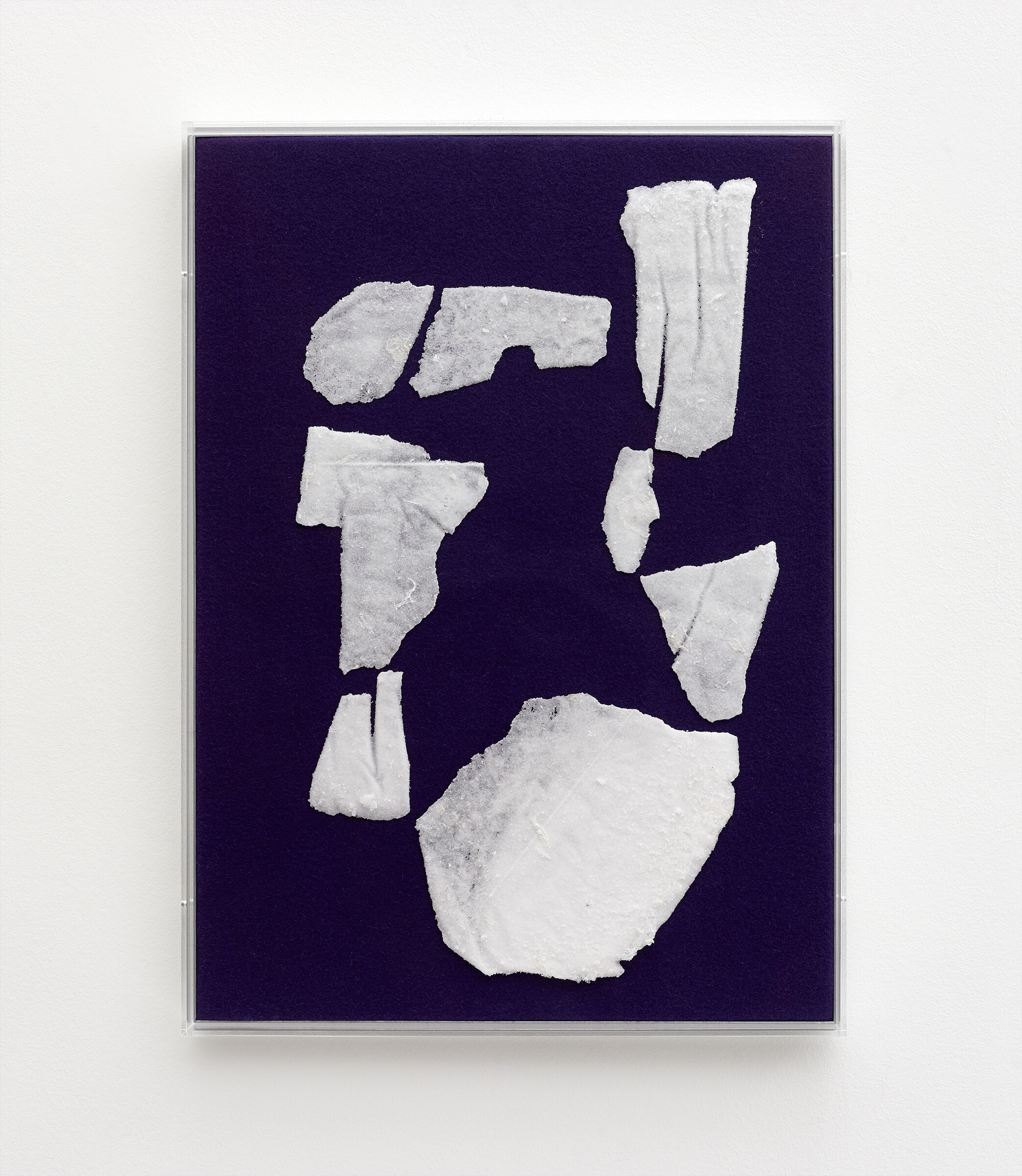
FOS
Untitled, 2020
Salt, acrylic, aluminium, felt
60,8 x 44,7 x 6 cm (23,94 x 17,6 x 2,36 in)
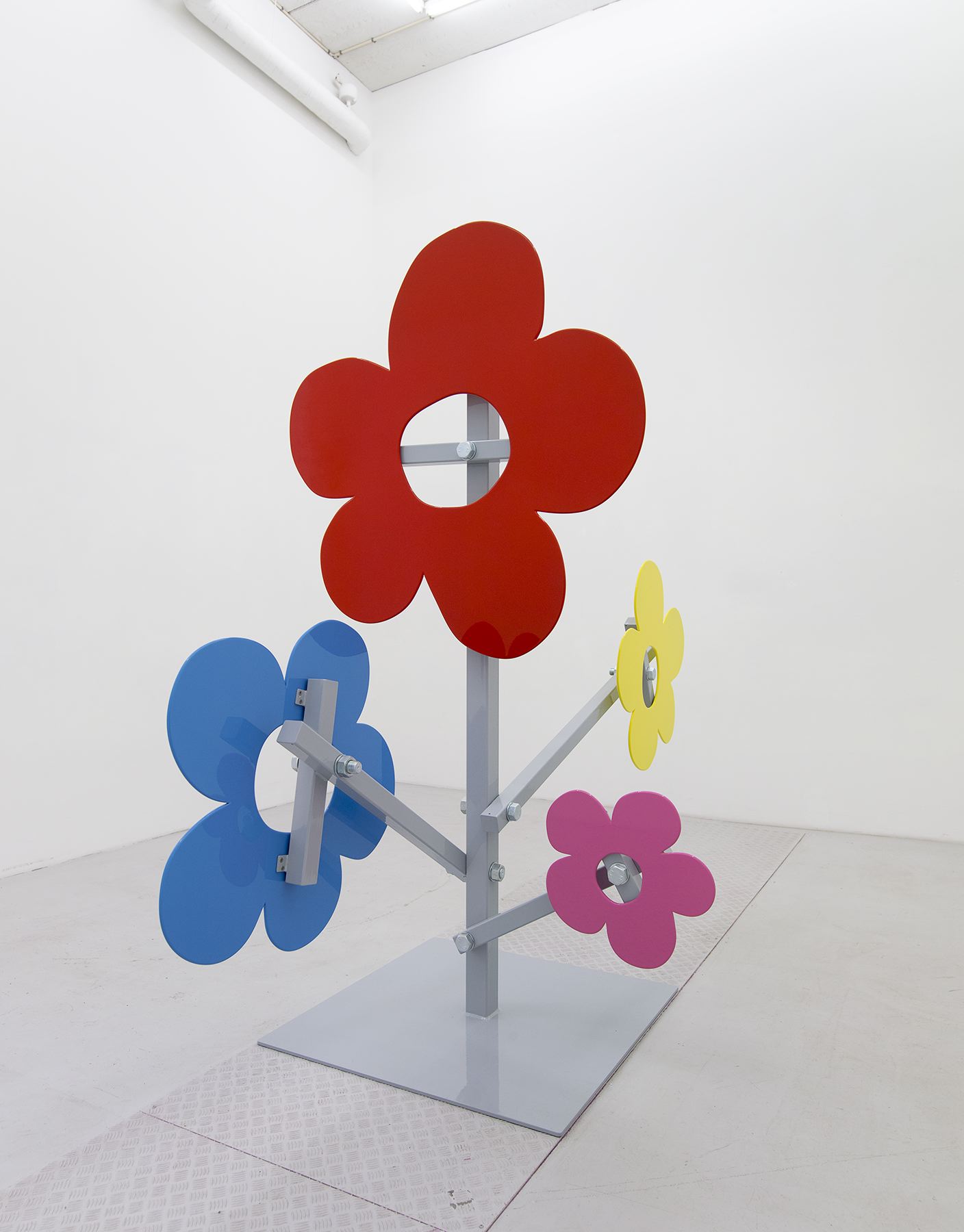
Olaf Breuning
Flower, 2016
Lacquered aluminium
248 x 284 x 154 cm (97,64 x 111,81 x 60,63 in)
Swiss artist Olaf Breuning is known for his impressive large scale sculptures and his ironic views on a reality that is shaped by the media. Breuning works in a large range of media from photography, video, drawing and installation – common is the use of a shared visual language and mix symbols from the world of pop and the media with icons of high culture. Somewhere between humor and a seriousness, they make us aware of our consumerism, Western stereotypes and gender clichés and analyses the relationship between art and kitsch, reality and illusion, authenticity and artificiality.
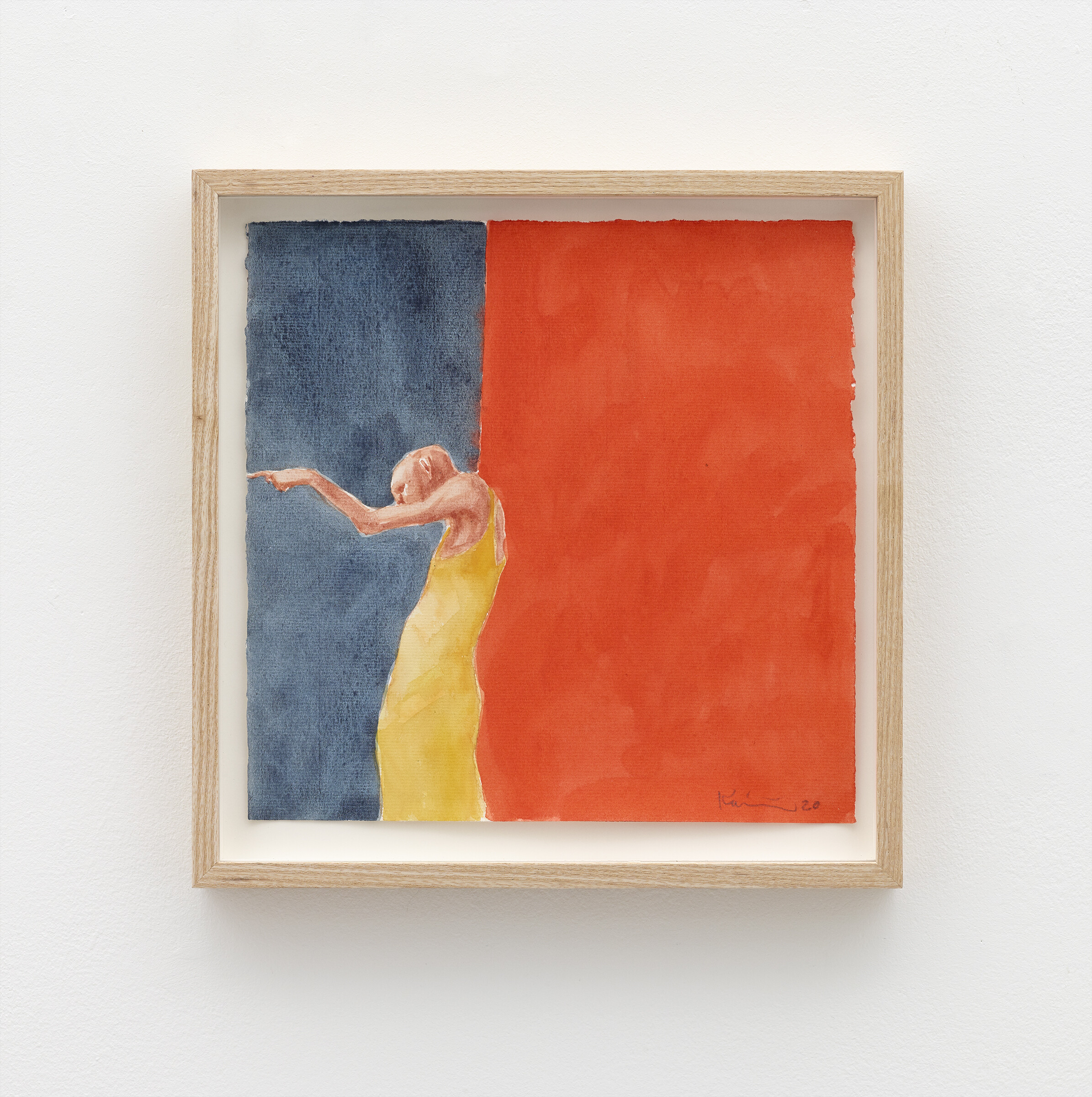
Michael Kvium
Short Story, 2020
Watercolor on paper
29,5 x 29,5 cm (11,61 x 11,61 in)
Sold
Short Stories is an ongoing series of works on paper.
Michael Kvium’s almost medieval representation of an extravagated main character could resemble a hellish figurative detail from a Flemish Renaissance painting. A narrative that is highlighted by the format.
Kvium's body of work contain a depth comparable with that of the human mind. Kviums figures and situations often remind of situations we recognise, either within ourselves or others. Therefore, Kvium's paintings can be considered narrative, telling a story about both the art world and the human interior.
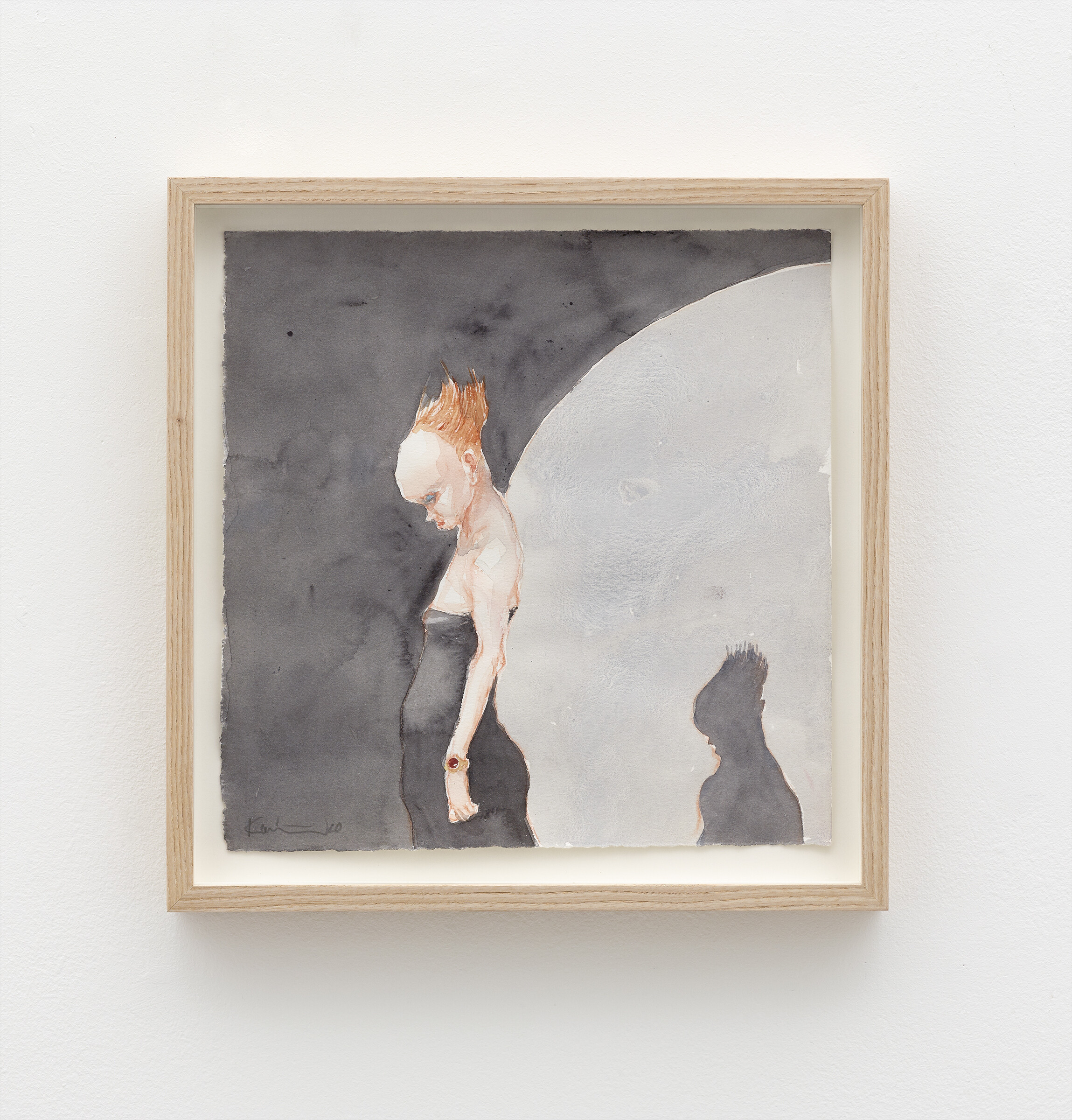
Michael Kvium
Short Story, 2020
Watercolor on paper
29,5 x 29,5 cm (11,61 x 11,61 in)
Sold
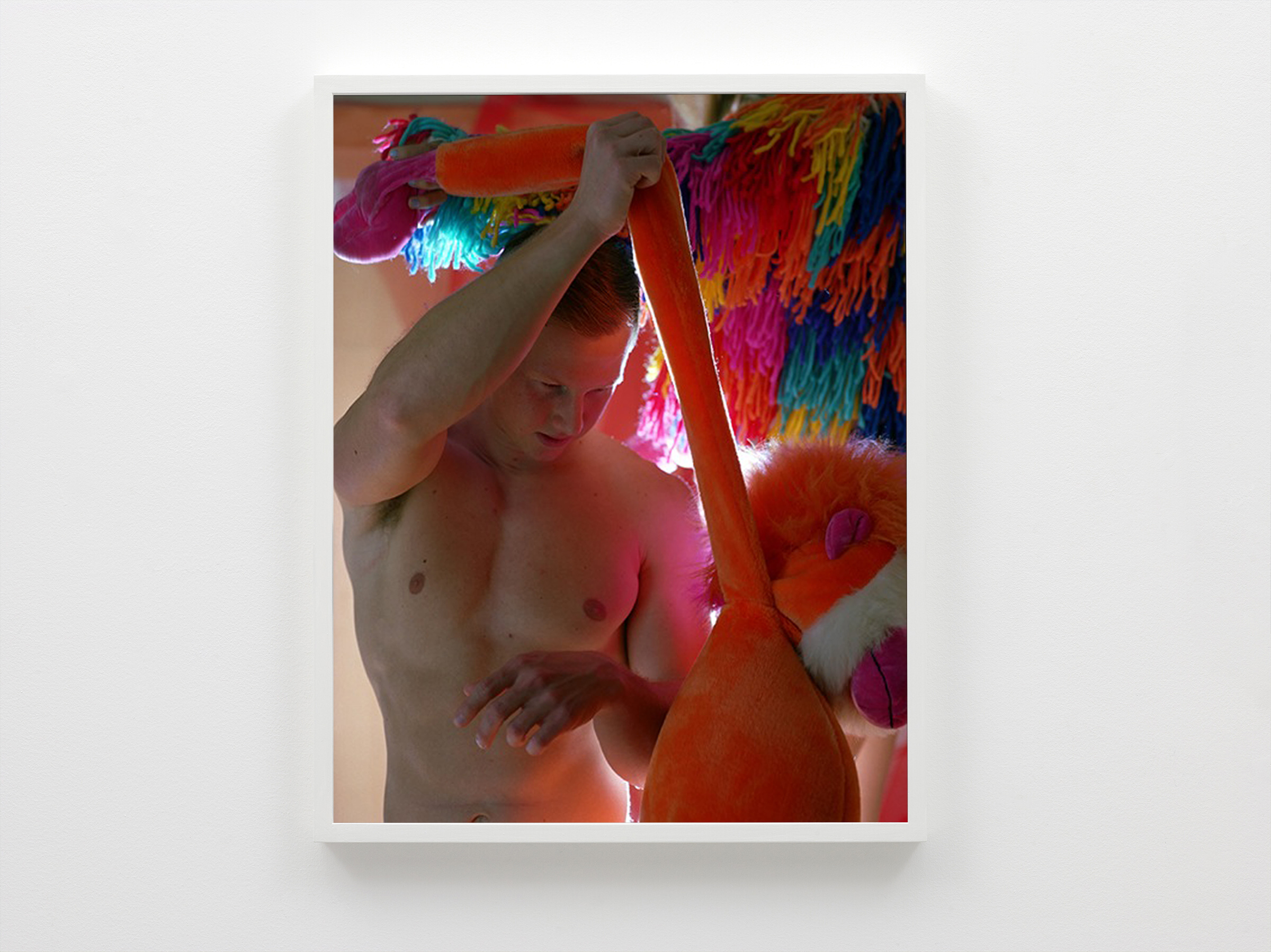
Torbjørn Rødland
Second Orienting Reflex, 2019
Chromogenic print, Kodak Endura paper
50 x 40 cm (19,69 x 15,75 in)
Edition #3/3, 1AP
Torbjørn Rødland's photographs are produced through film-based cameras and chemical processing. His self-aware and often uncanny photographs, films, and books are saturated with symbolism, lyricism, and eroticism. They take on existing visual forms and genres from still lives to portraits to landscapes, but without the research tone of first-wave conceptual art or the ironic commentary of the subsequent Pictures Generation. Attempts to seize and to integrate truth, rather than to deconstruct it, accompany Rødland's inclination to delve into problematic aspects of contemporary photography and the history of art. He probes popular visual languages in search of both spiritual and perverse qualities, so as to prolong our engagement with the single and the moving image.
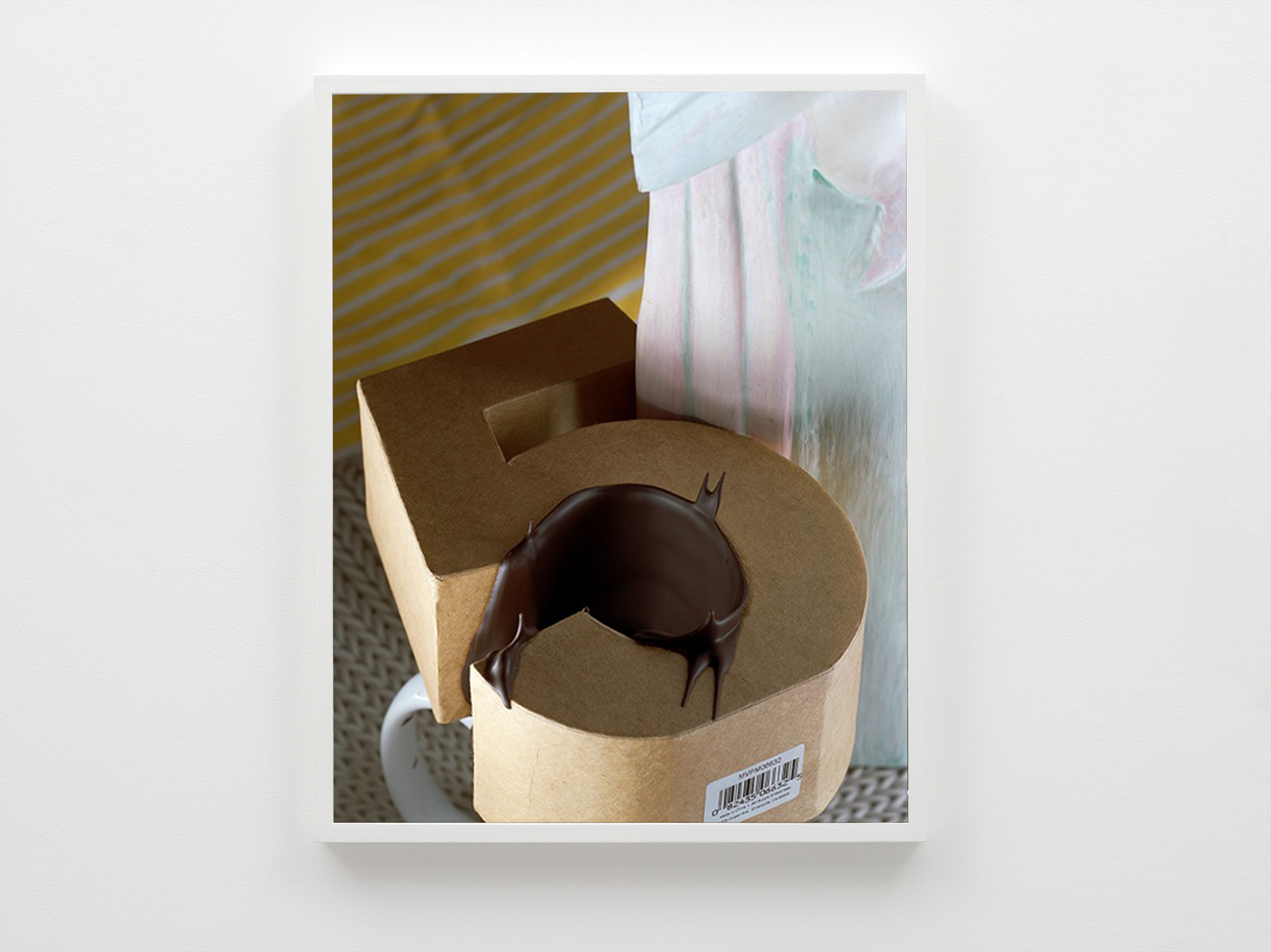
Torbjørn Rødland
Make Sure Your Mask Is Secure Before Helping Others, 2017
Chromogenic print, Kodak Endura paper
57 x 45 cm (22,44 x 17,72 in)
Edition #3/3, 1AP
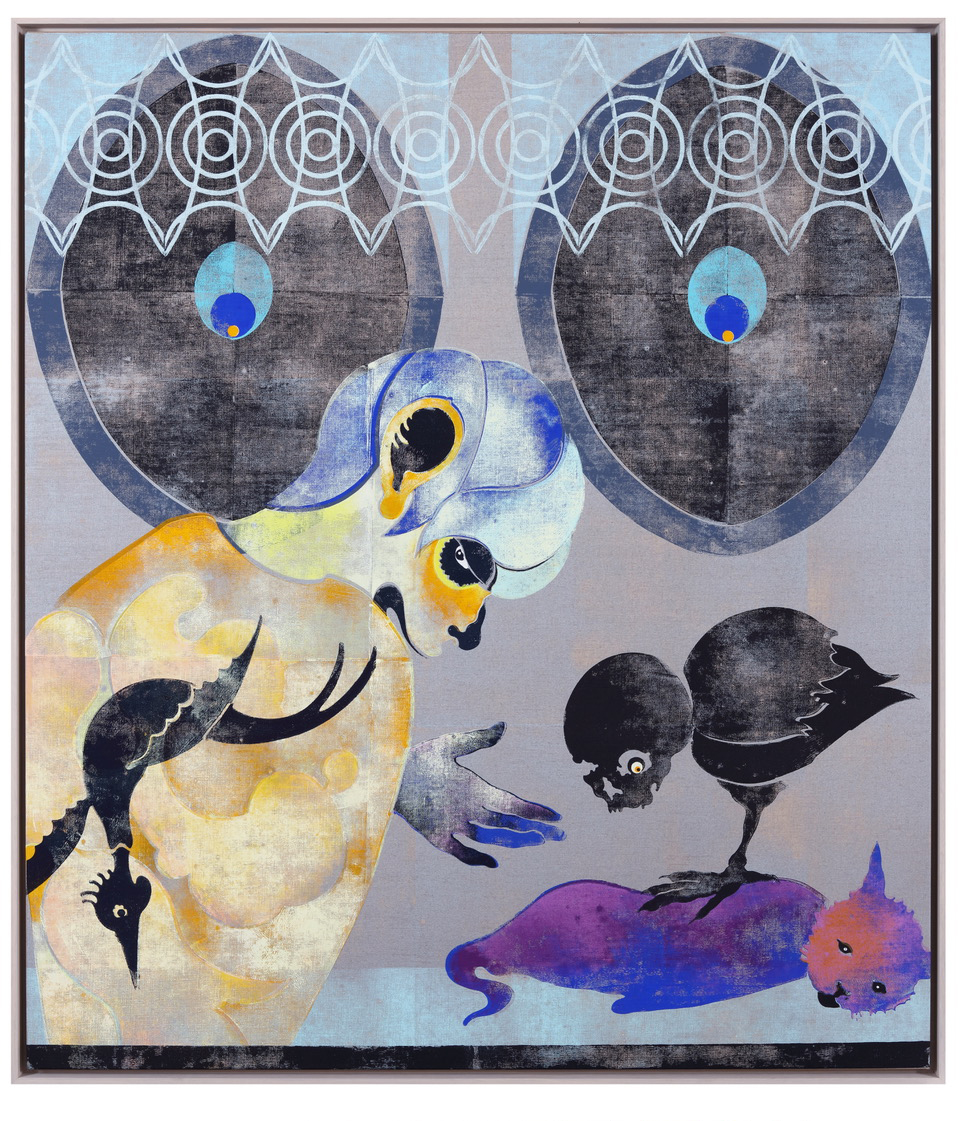
Gert & Uwe Tobias
Untitled, 2020
Colored woodcut on canvas
150 x 130 cm (59,06 x 51,18 in)
Edition #1/2, 1AP
Sold
In Gert & Uwe Tobias' paintings traditional folk image- making skills, such as carving and hand printing, are given a twist, and put through the filter of the twentieth and twenty-first century. Their exaggerated imagery, at turns abstract, geometric, fantastic and eerily animistic, draw on such diverse sources as popular culture, traditional Eastern European folk art, and art historical movements like Constructivism. Tobias create a body of work that is both playful and haunting.
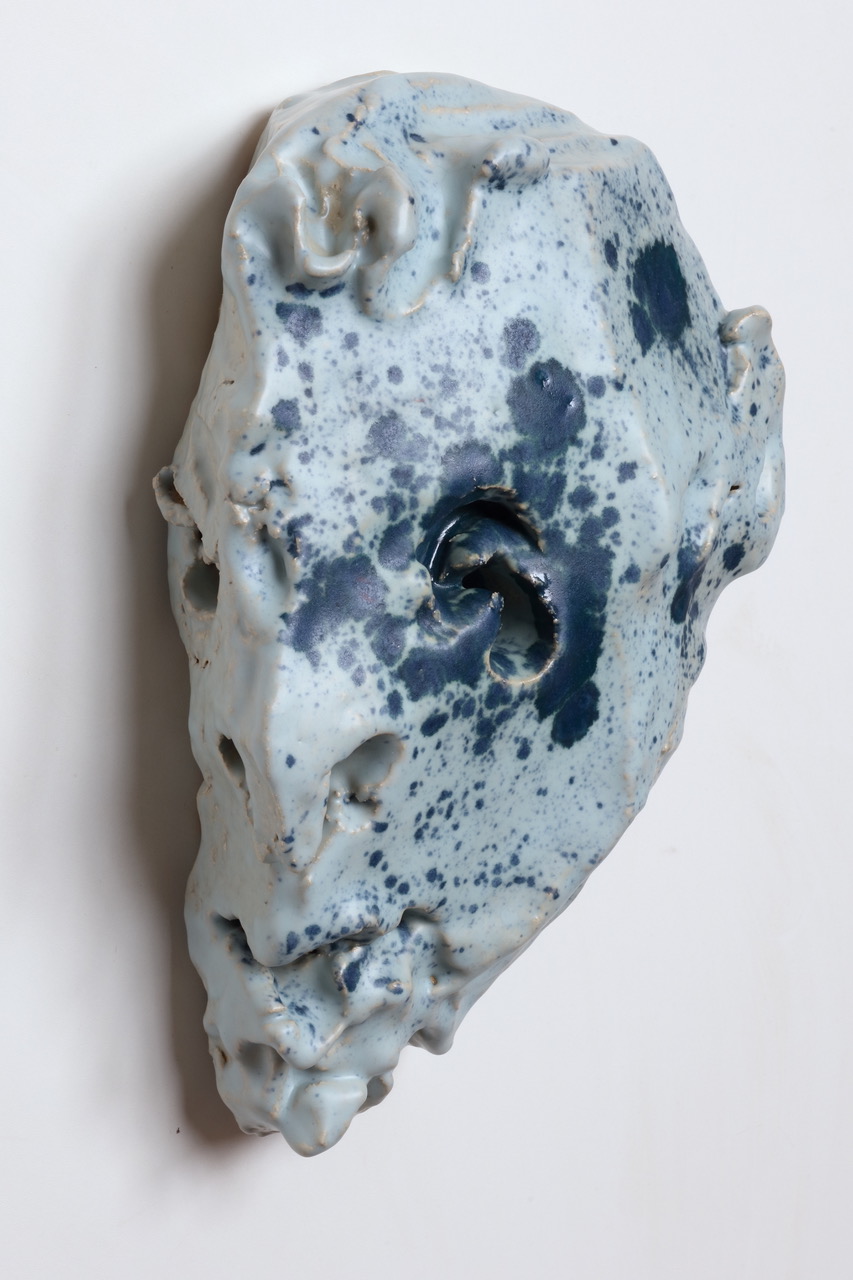
Gert & Uwe Tobias
Untitled, 2019
Glazed ceramic
38 x 27 x 12 cm (14,96 x 10,63 x 4,72 in)
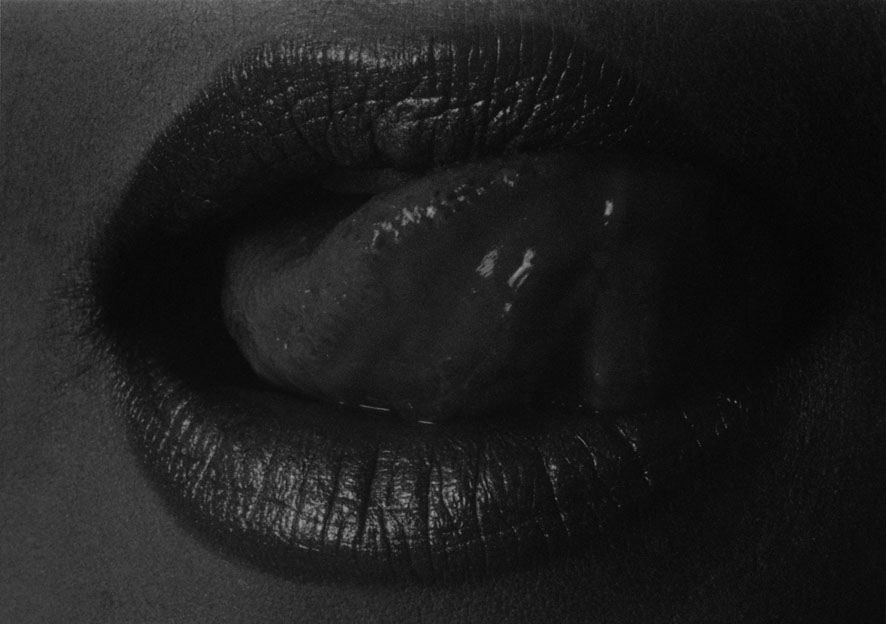
Tom Sandberg
Untitled, 2009
Silver bromide print framed with museum glass
36,5 x 44 cm (14,37 x 17,32 in)
Edition #2/6
Sold
A master of light in the photographic tradition, Sandberg worked exclusively within the medium of black-and-white photography and continued throughout his life creating his characteristic analog artworks with its rich grey tones and tonalities in the darkroom. Always on the move with his camera tied to his hand, Sandberg explored the surface and depth ratio in a motif to build both ambiguous and recognizable complex reality. Retrieving his modest, yet majestic images within the photographic classical genres such as clouds, people on the street, the female nude, airplanes, and landscapes, including more abstract subject matter, Sandberg’s remarkable poetic vision is imbued with a strong sense of presence and mystery.
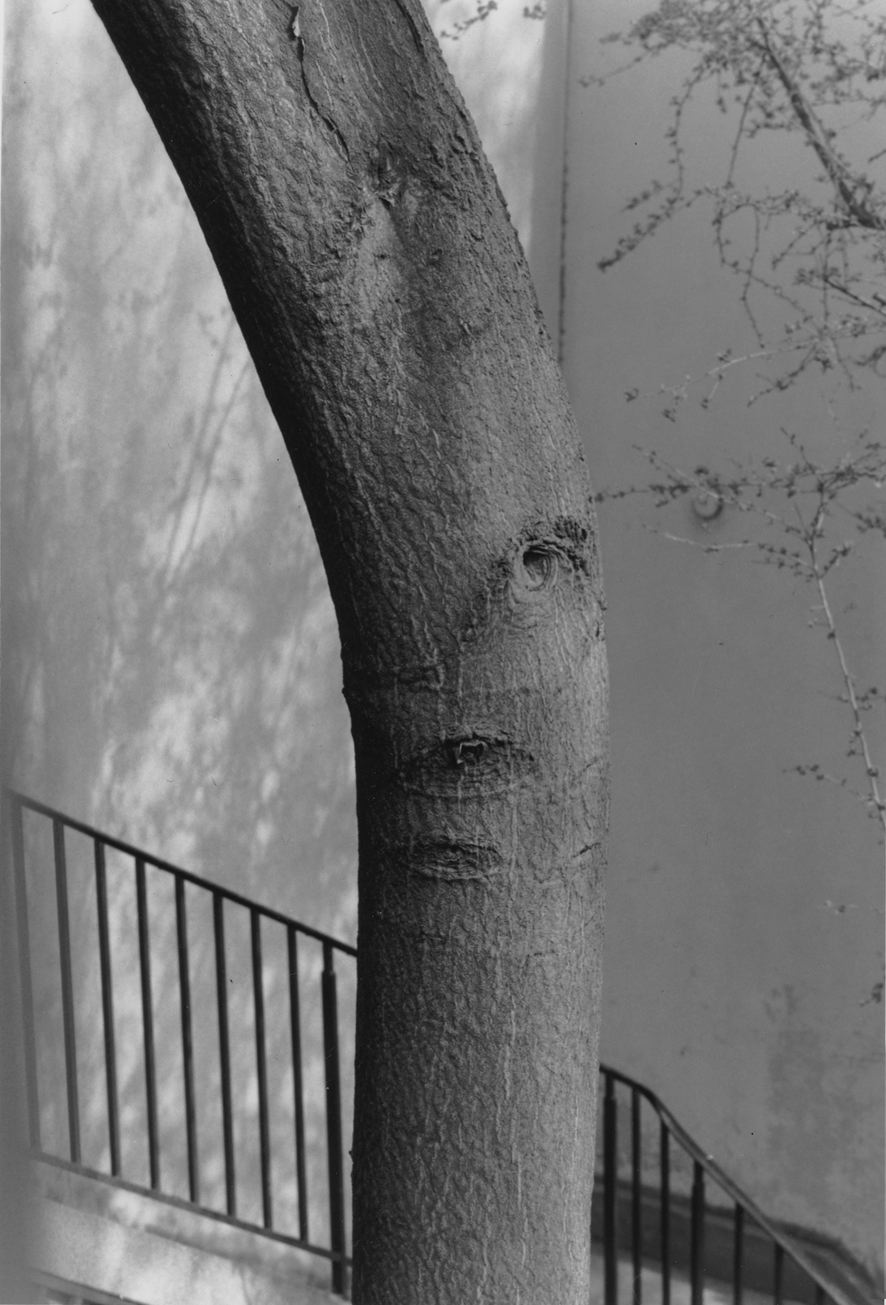
Tom Sandberg
Untitled, 2010
Silver bromide print framed with museum glass
52 x 40,5 cm (20,47 x 15,94 in)
Edition #1/6
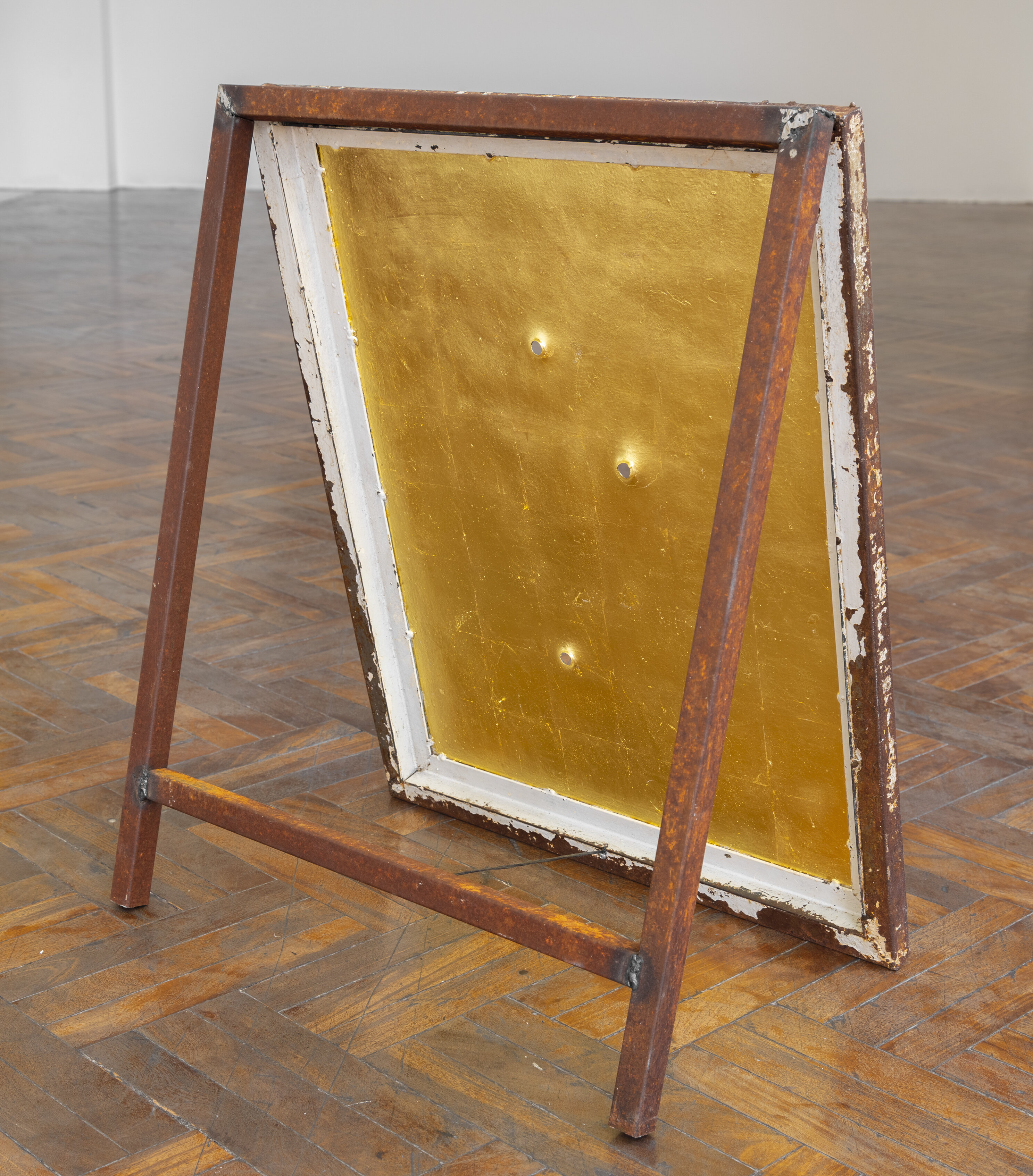
Darío Escobar
Mensajes Cifrados No. 04, 2020
Metal, gold and pigments
70 x 59 x 39 cm (27,56 x 23,23 x 15,35 in)
The work that I have been doing throughout these years has been in constant dialogue with the Universal History of Art. When I was beginning, at the end of the 1990s, I was interested in the relationships between "consumption" and "History." I made a series of works in which I used Baroque techniques, such as gold foil, easel painting, and embossed silver to cover everyday objects such as skateboards, stationary bicycles, and basketball hoops, among others. Mass-produced products that came from China, and which were distributed by the so-called "informal trade" of the urban markets in downtown Guatemala City. The intention was to propose, with the contrast of these products and the old Baroque techniques, the idea of perpetuating a colonizing process. With the difference that, this time, colonization took place at a distance. A process in which the transnationals fulfilled the role of the colonial comendador" (commander) during the final decade of the 20th century. That dialogue with Art History, from my Central American context, has been a constant. Two years ago, in Mexico, I had access to the work of the German artist Mathias Goeritz, and I discovered a series of ideas that seduced me in terms of thought and sensitivity. In the works that the artist developed at the end of the 1950s, entitled Mensajes dorados (golden messages), Goeritz applies gold leaf on metal sheets, which he then rhythmically perforates based on a coded message that imbues the works with a spiritual function, and which impregnates a halo of light that is refracted by the gold surface. I was captivated. For many years I collected, along the roads of eastern Guatemala and southern Mexico, signs that ranged from promotional advertisements for small shops to road signs and beverage brands, which were used as daily targets, gunshot receptors, either for fun or intimidation. Initially, these signs were, for me, the support of something beyond what they advertised. They were like the marks on the skin of a gang member. They represented things that I did not understand. From these signs, I made an analogy between what these bullet holes are trying to tell us in everyday life and the Mathias Goeritz series. I discovered that, like Goeritz's Mensajes dorados, there are tangible readings from a literal perspective, but threatening ones from a sensitivity viewpoint. Texts that we don't know, but that we understand. So, I applied, like Goeritz, gold leaf to one face of a sign, and left the other exposed as-is. Basically, I decided to dialogue openly with the artist on a formal and conceptual level. In this series of works that I have been making since 2019, my fundamental interest is to return the blow, in some way. It is using the opportunity of a second reading to rethink everything that is written, and we still cannot learn. A manner in which the threat deviates from the meaning, and violence and poetics coexist in the same space of daily life.”
– Darío Escobar
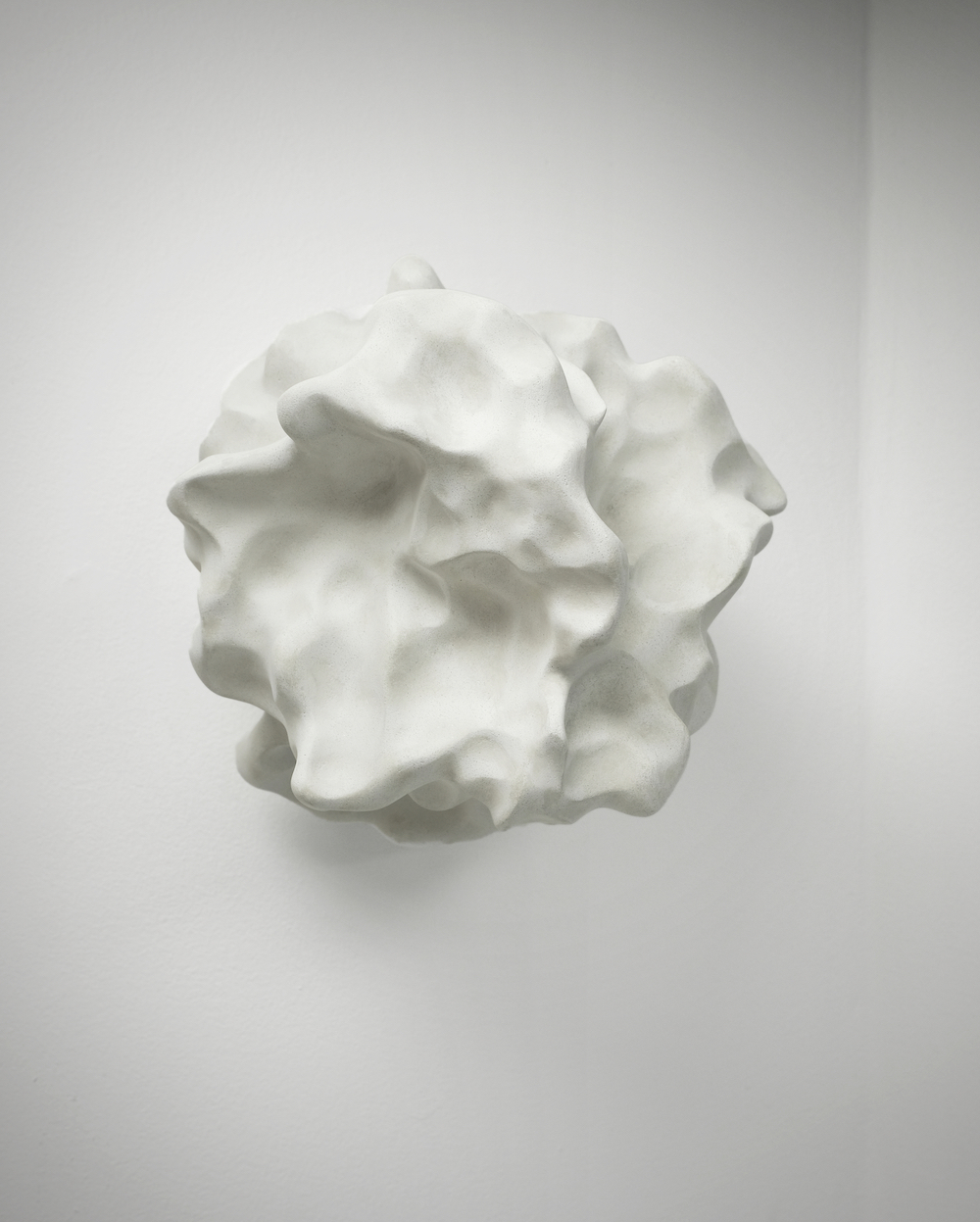
Jone Kvie
Meteor (M181119), 2019
Marble dust, jesmonite
29 cm (11,42 in)
1AP, Edition of 3, 1AP (each in unique color)
Contact
Nils Stærk, nils@nilsstaerk.dk
Laura Goldschmidt, Laura@nilsstaerk.dk
Nina Nørreby, Nina@nilsstaerk.dk




